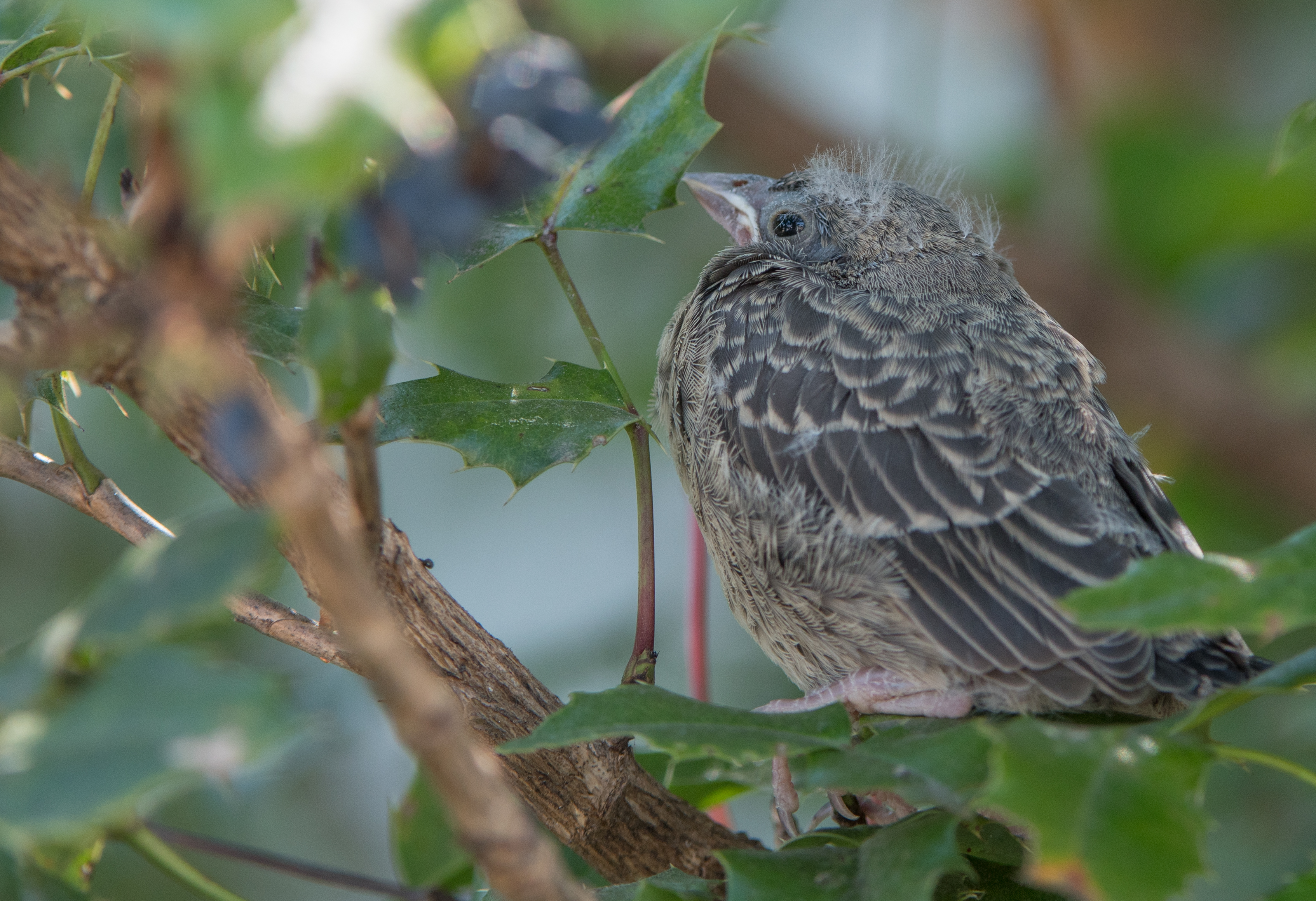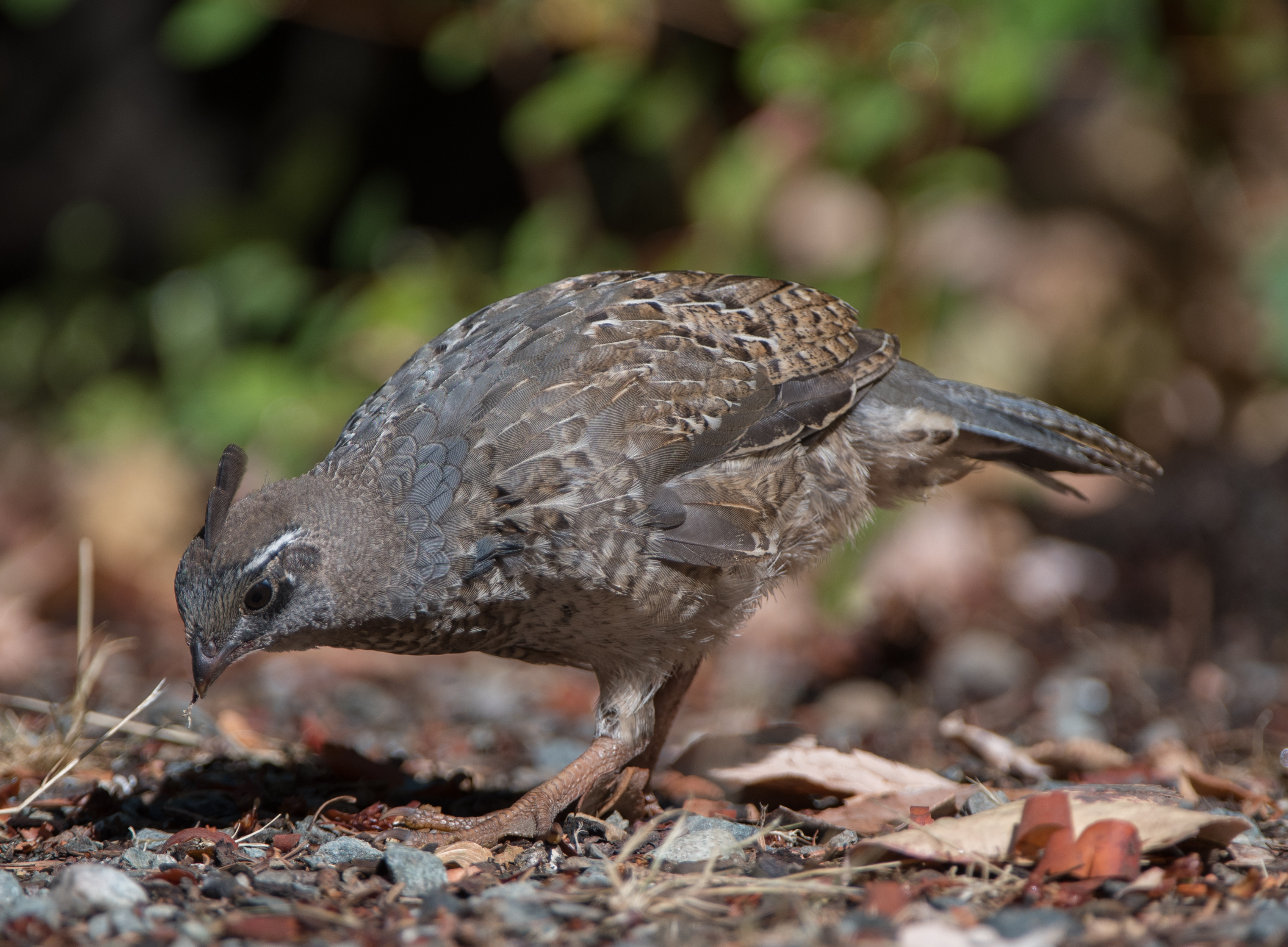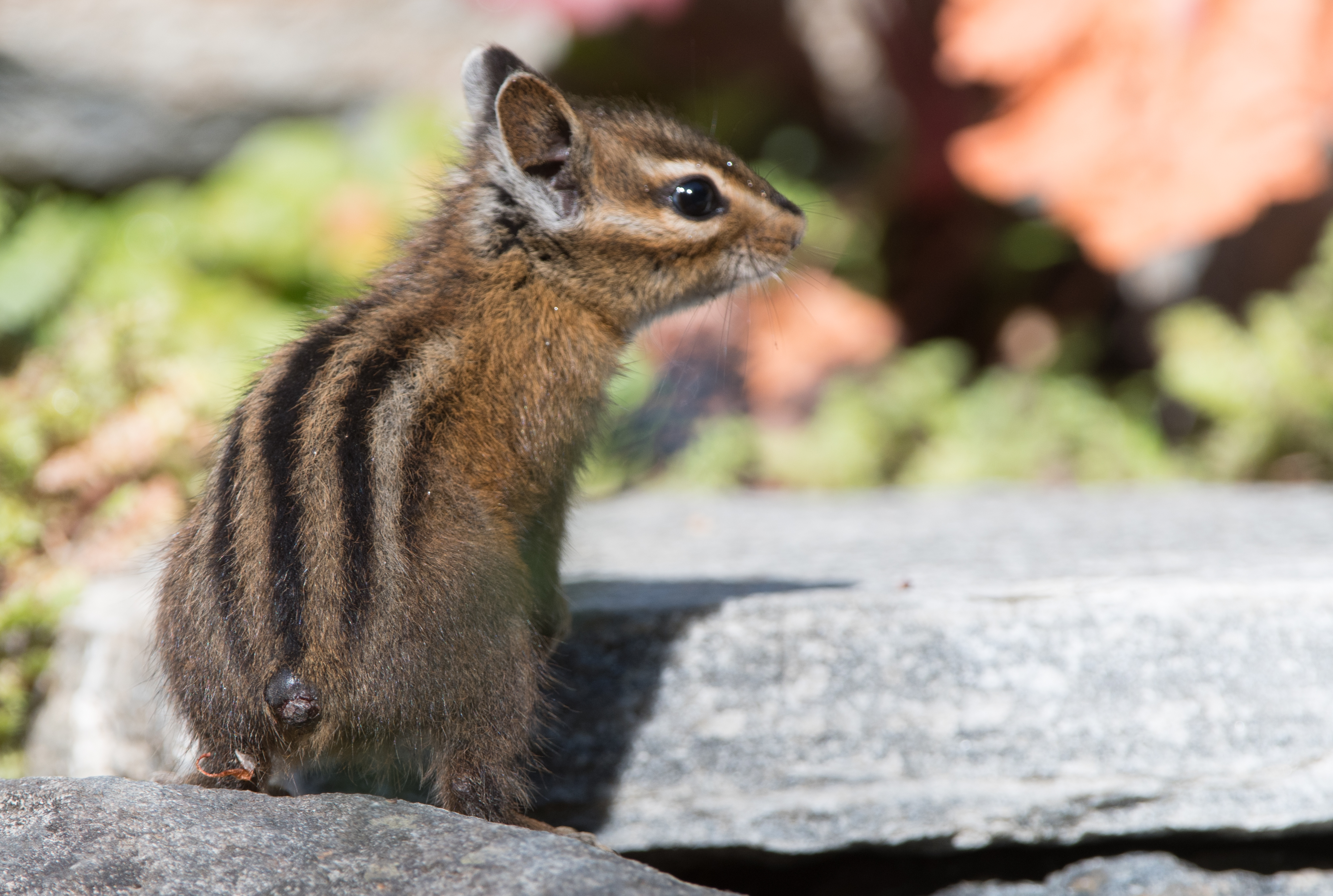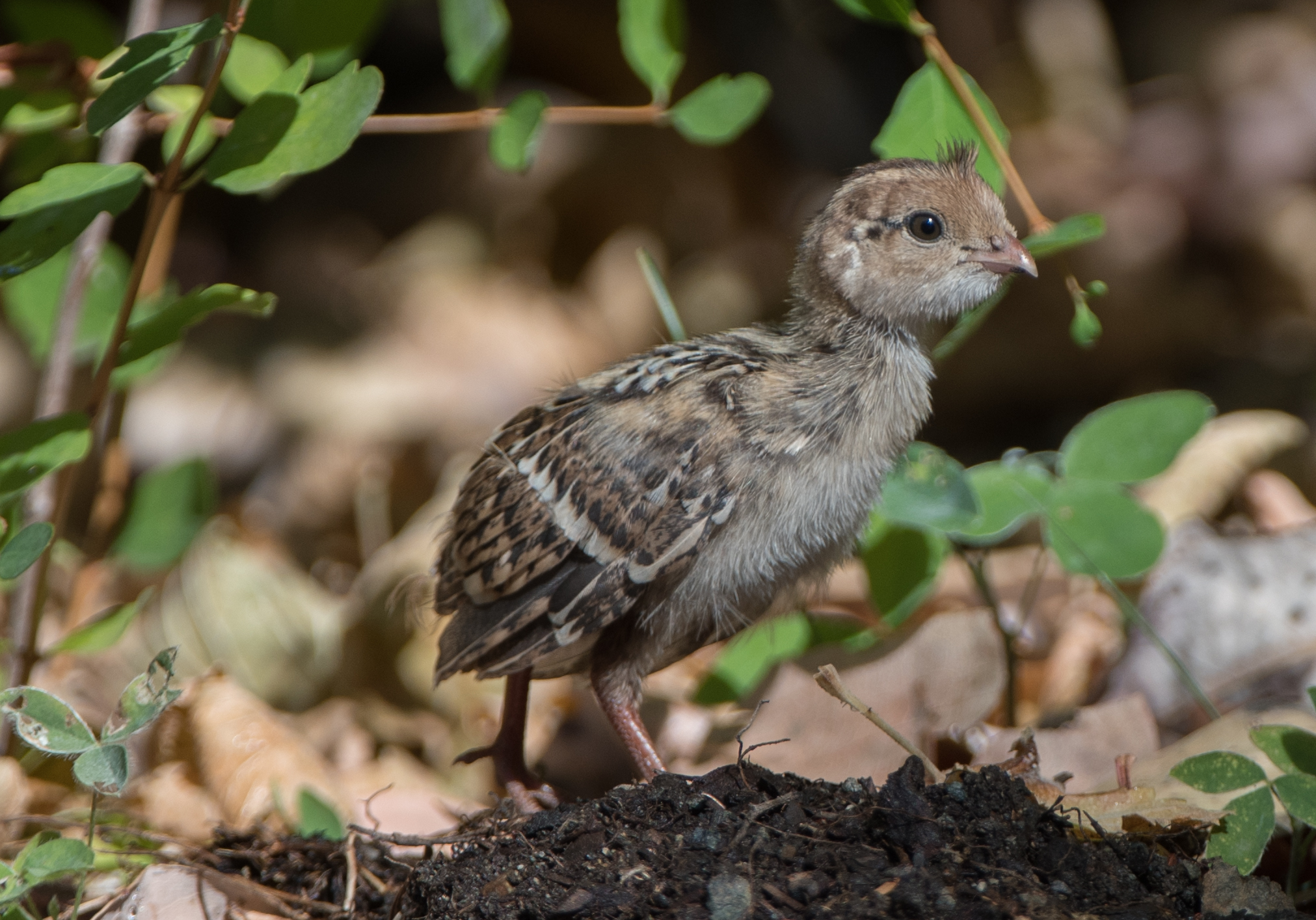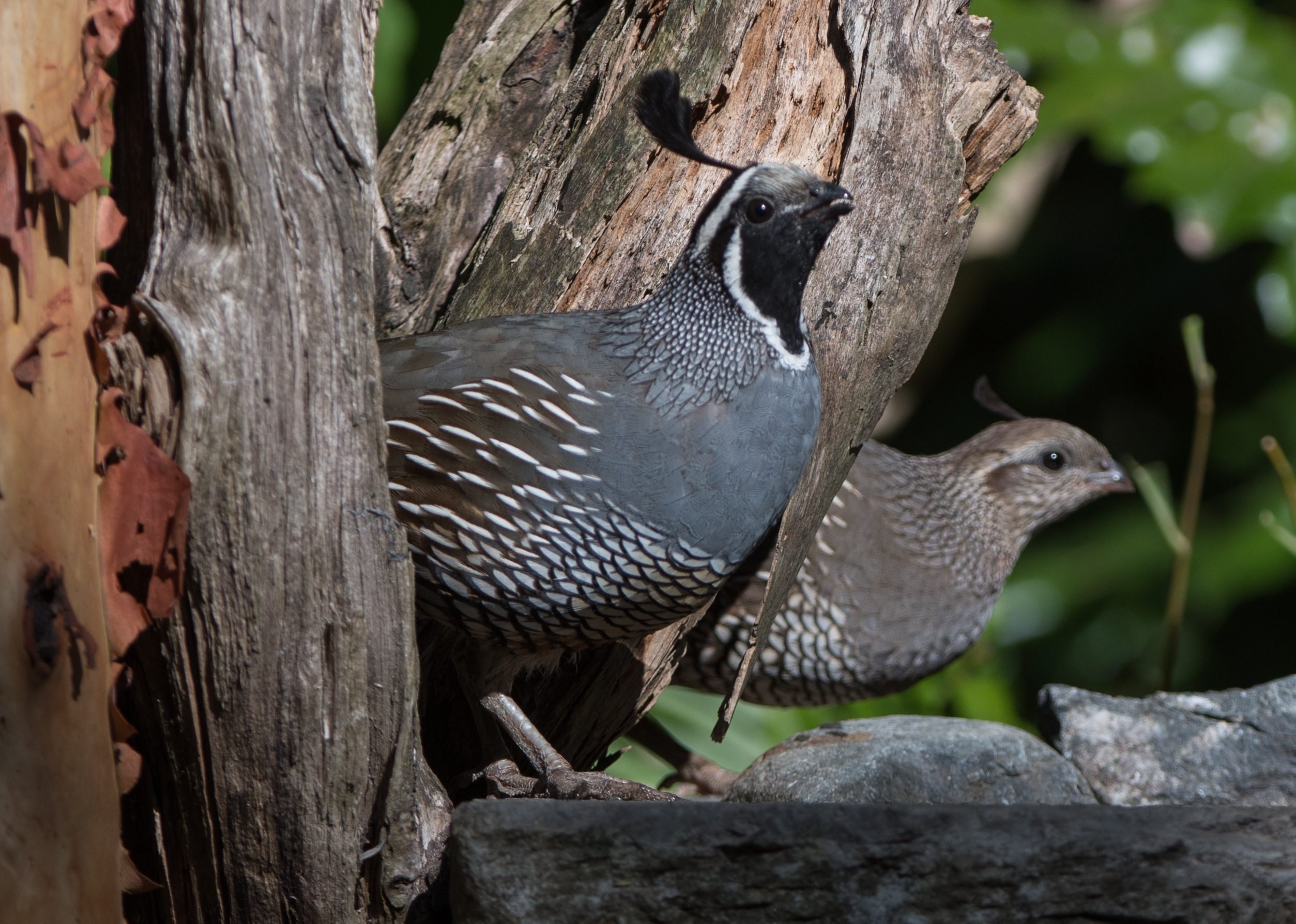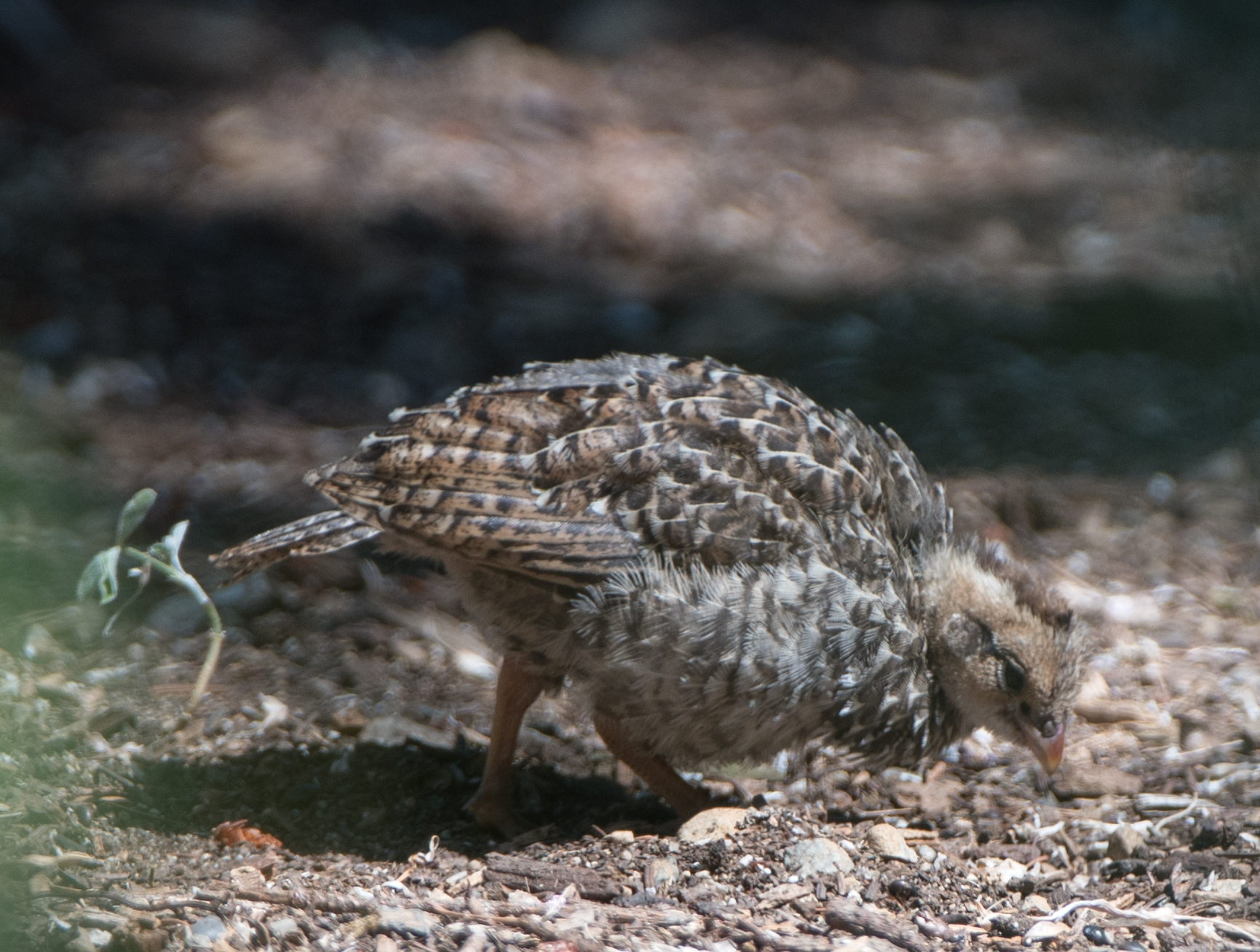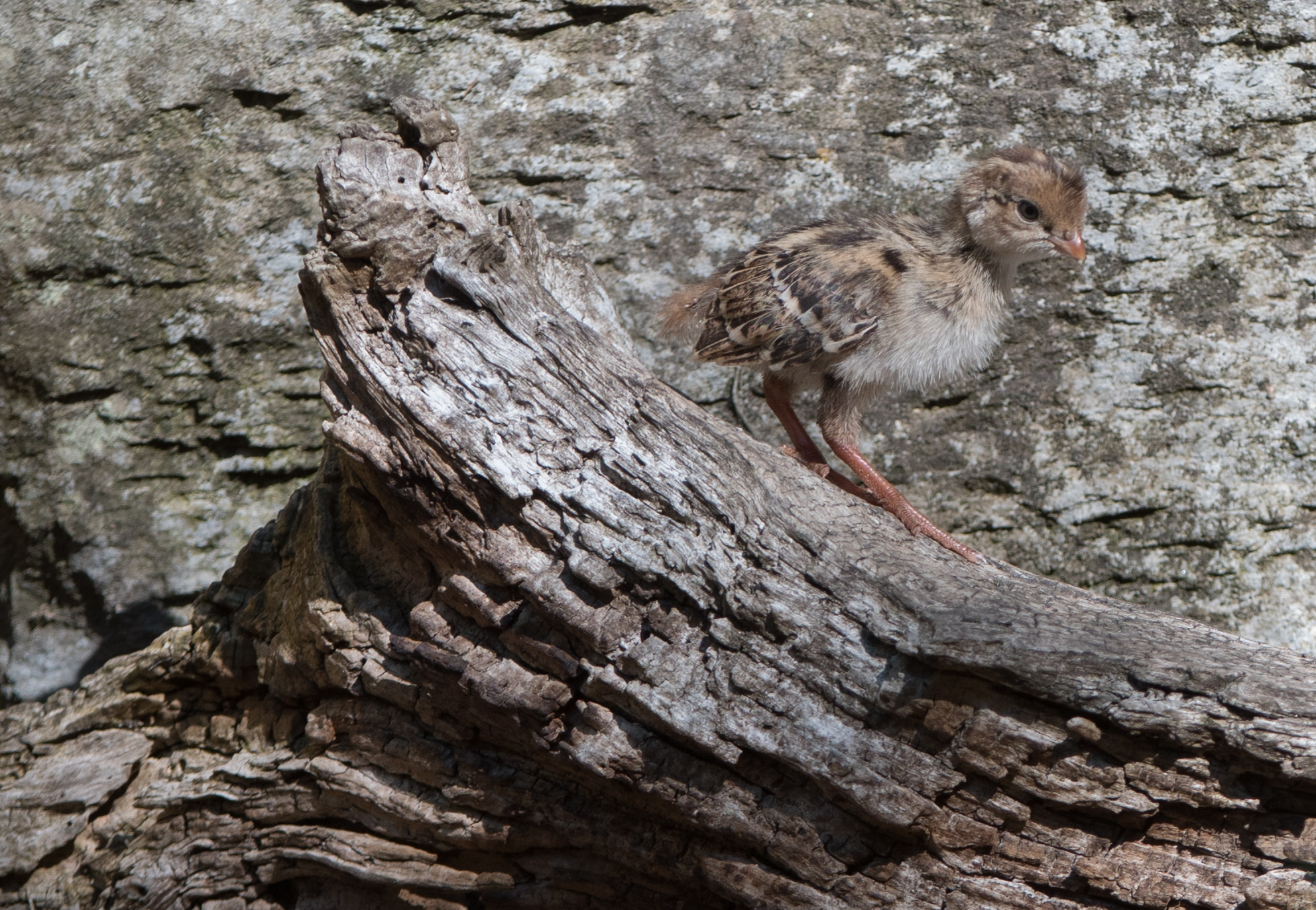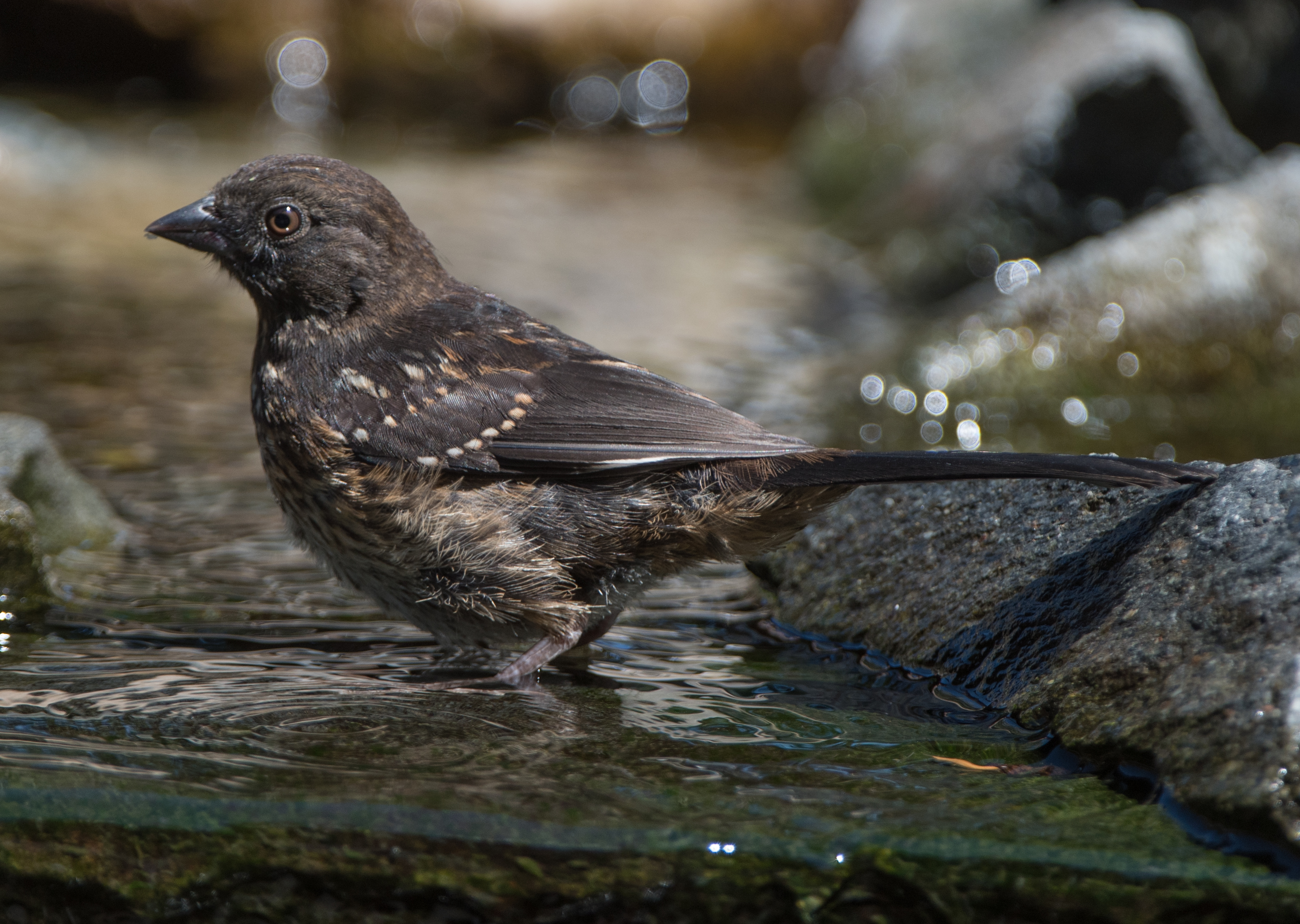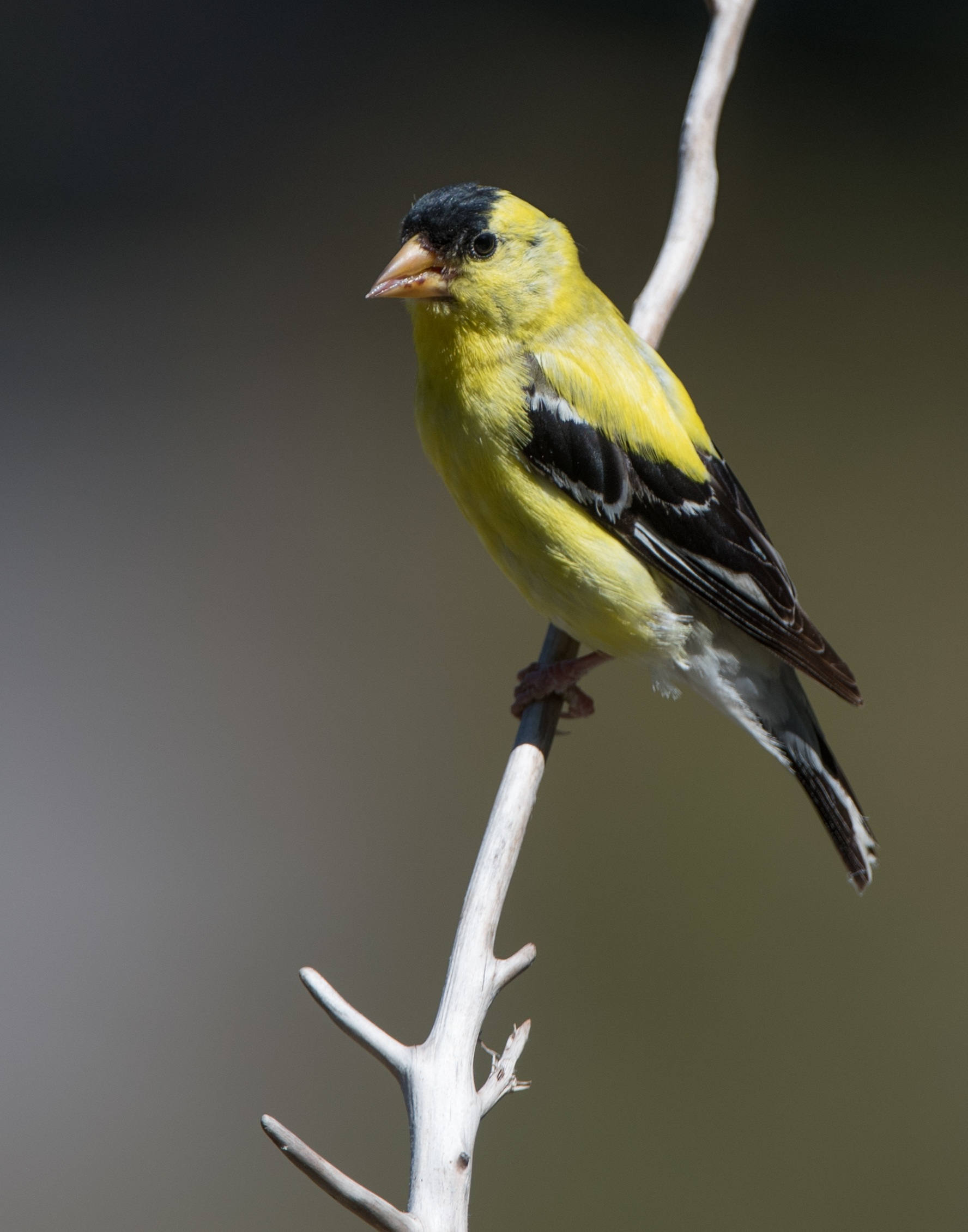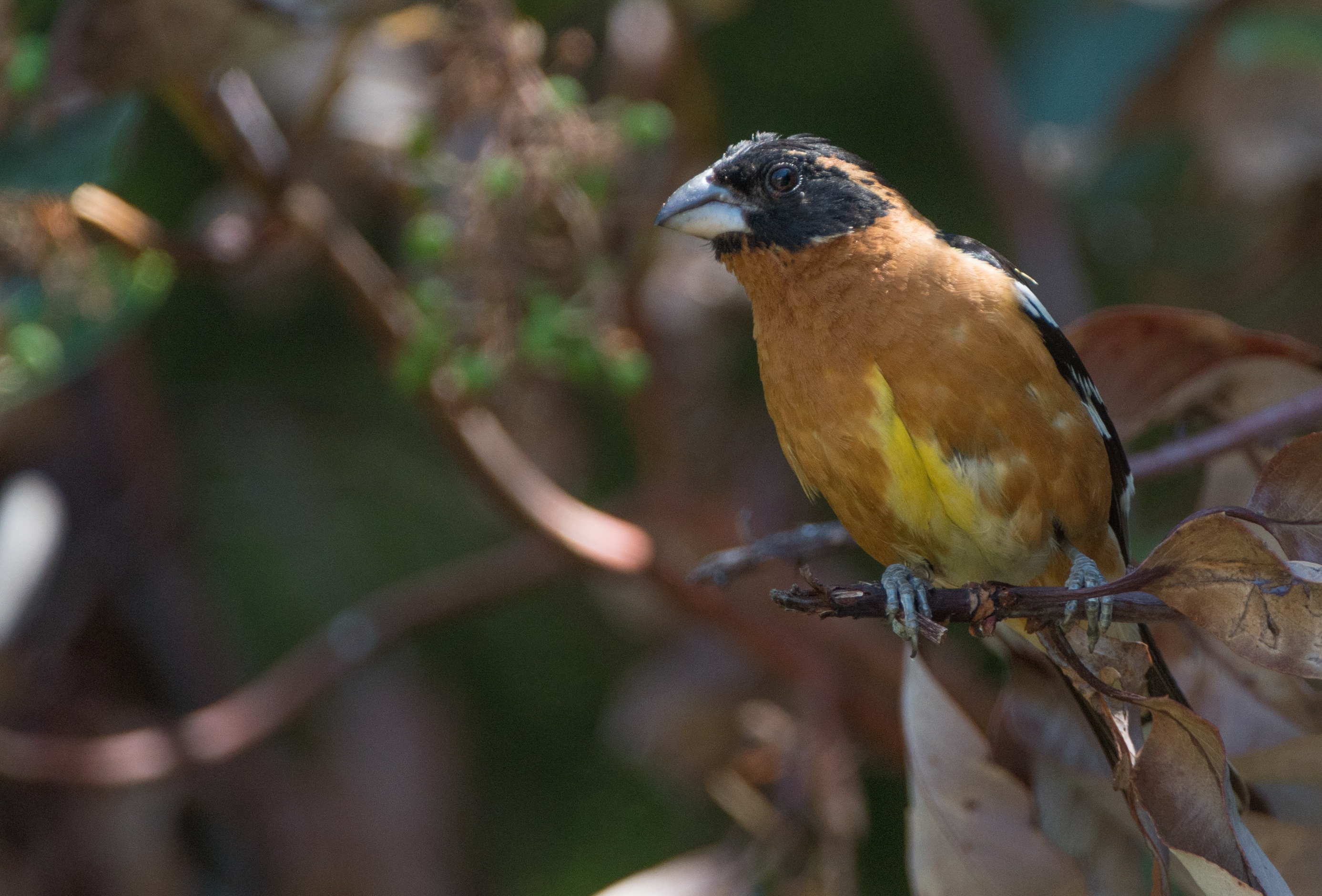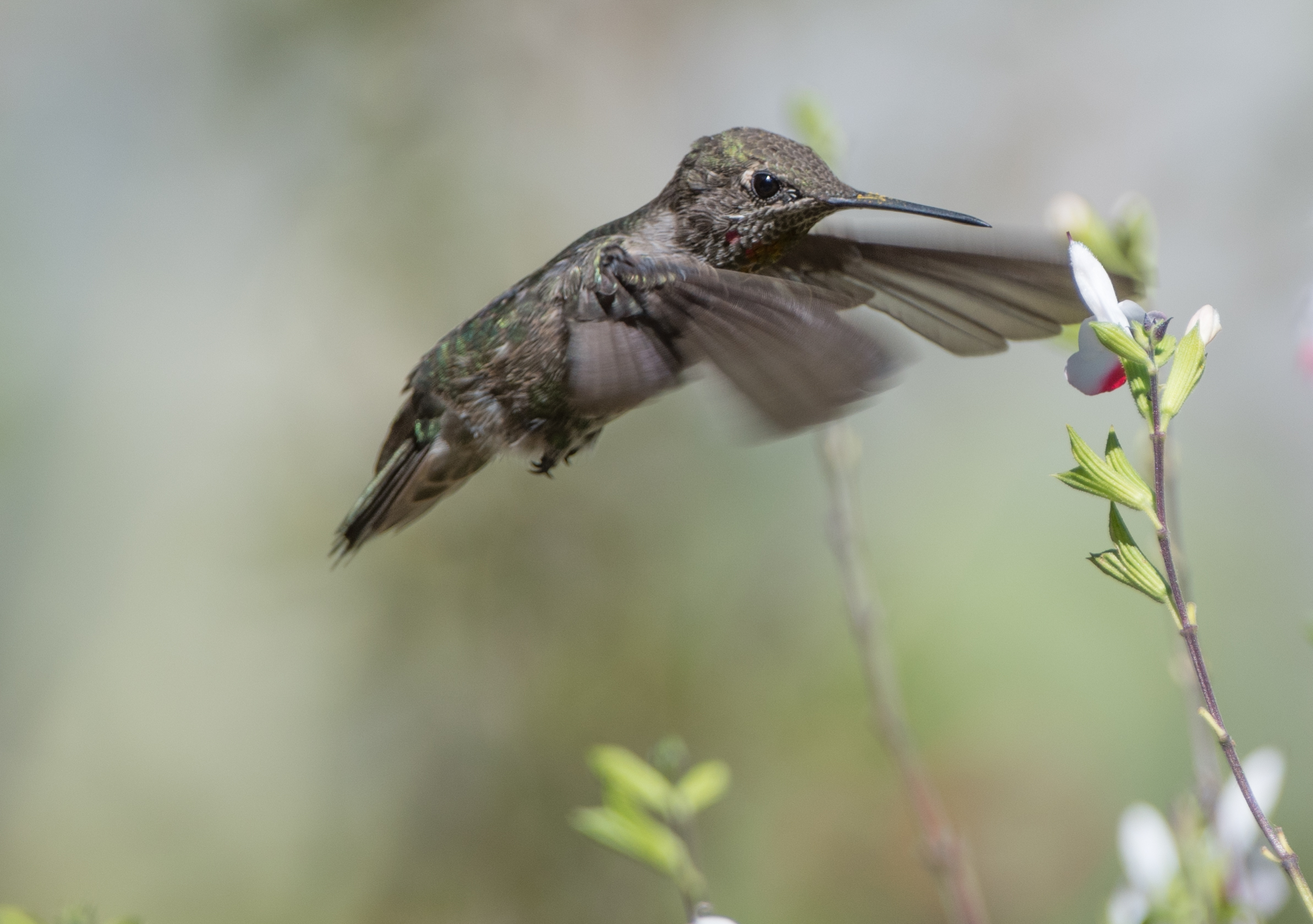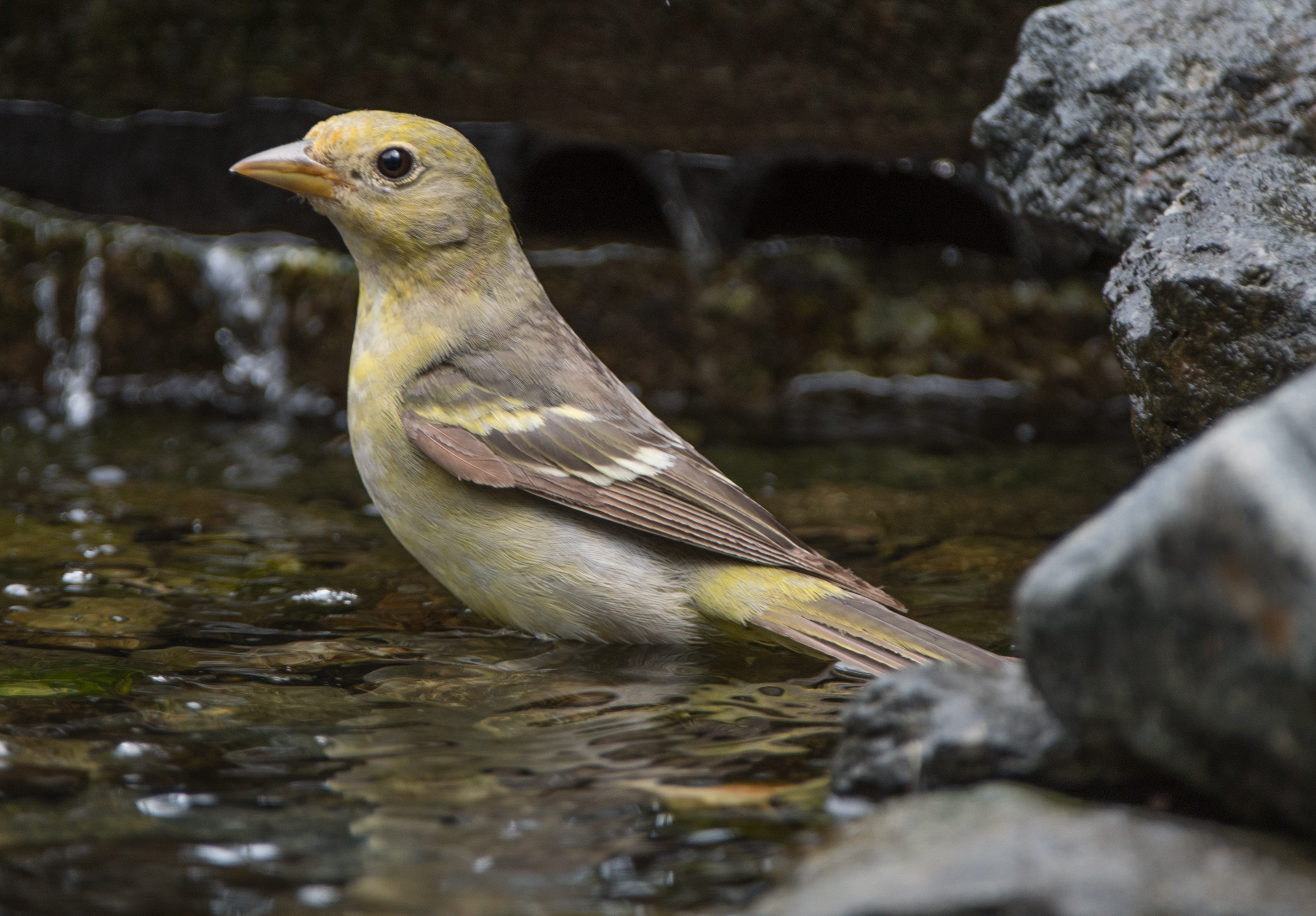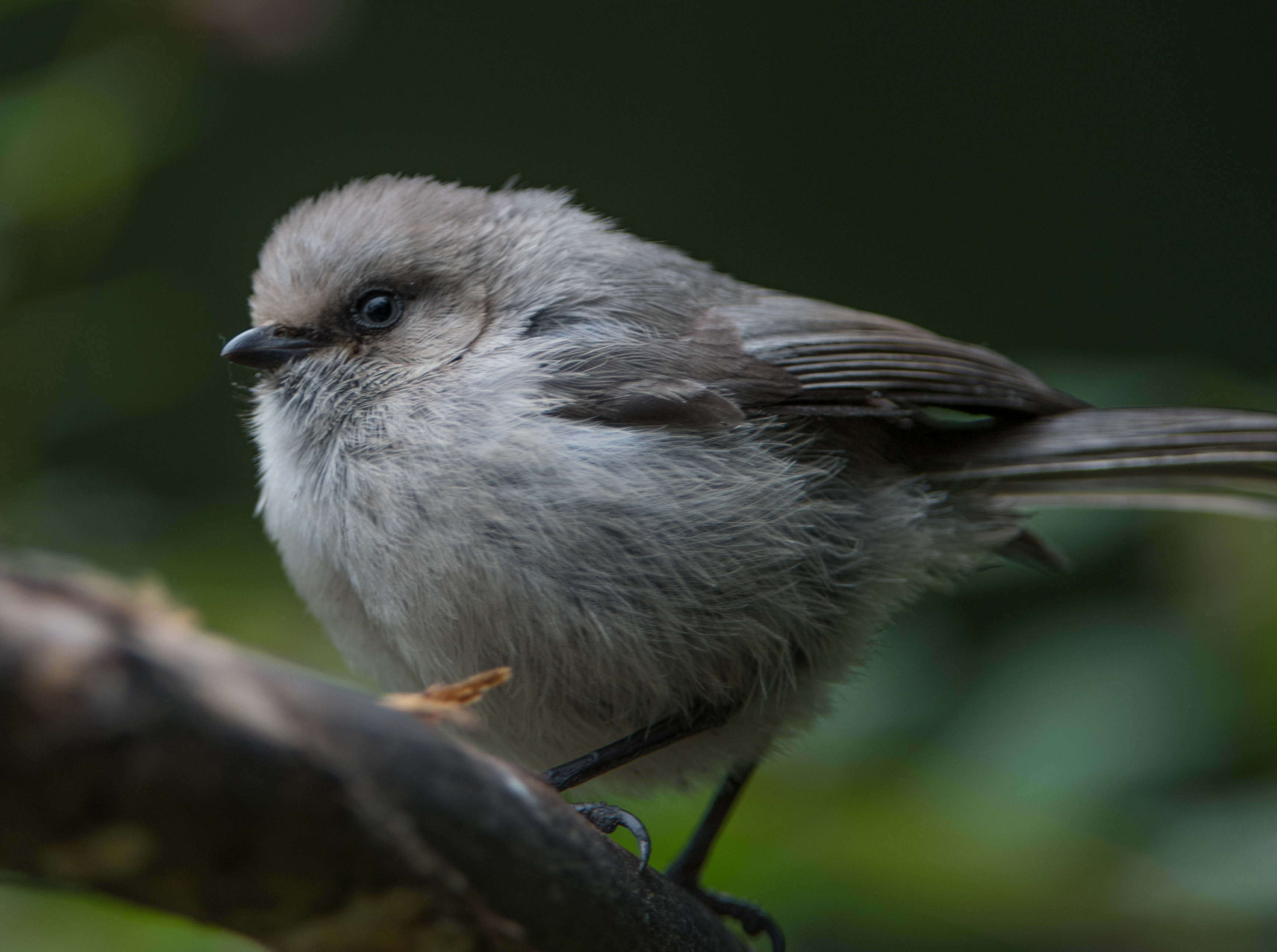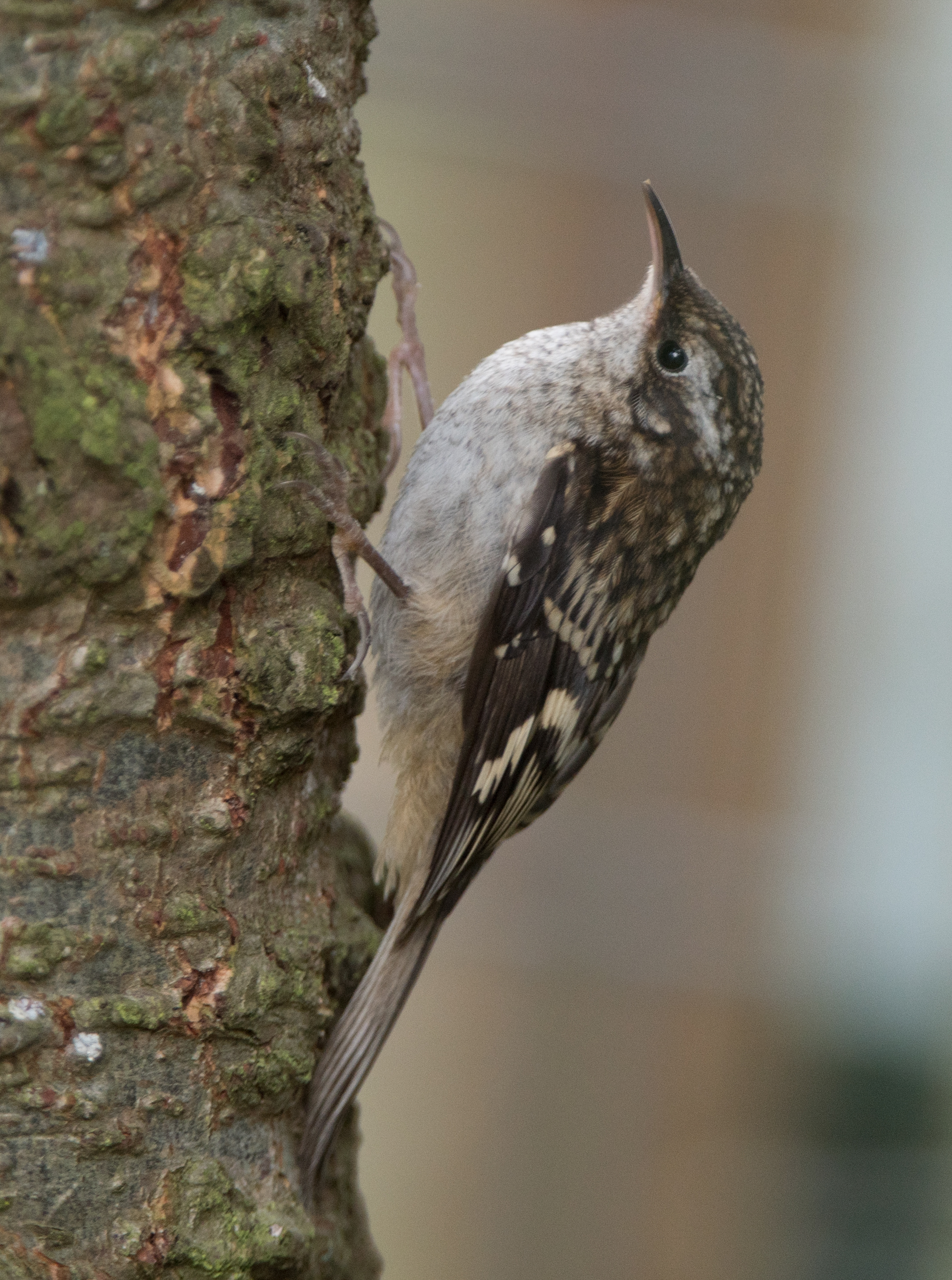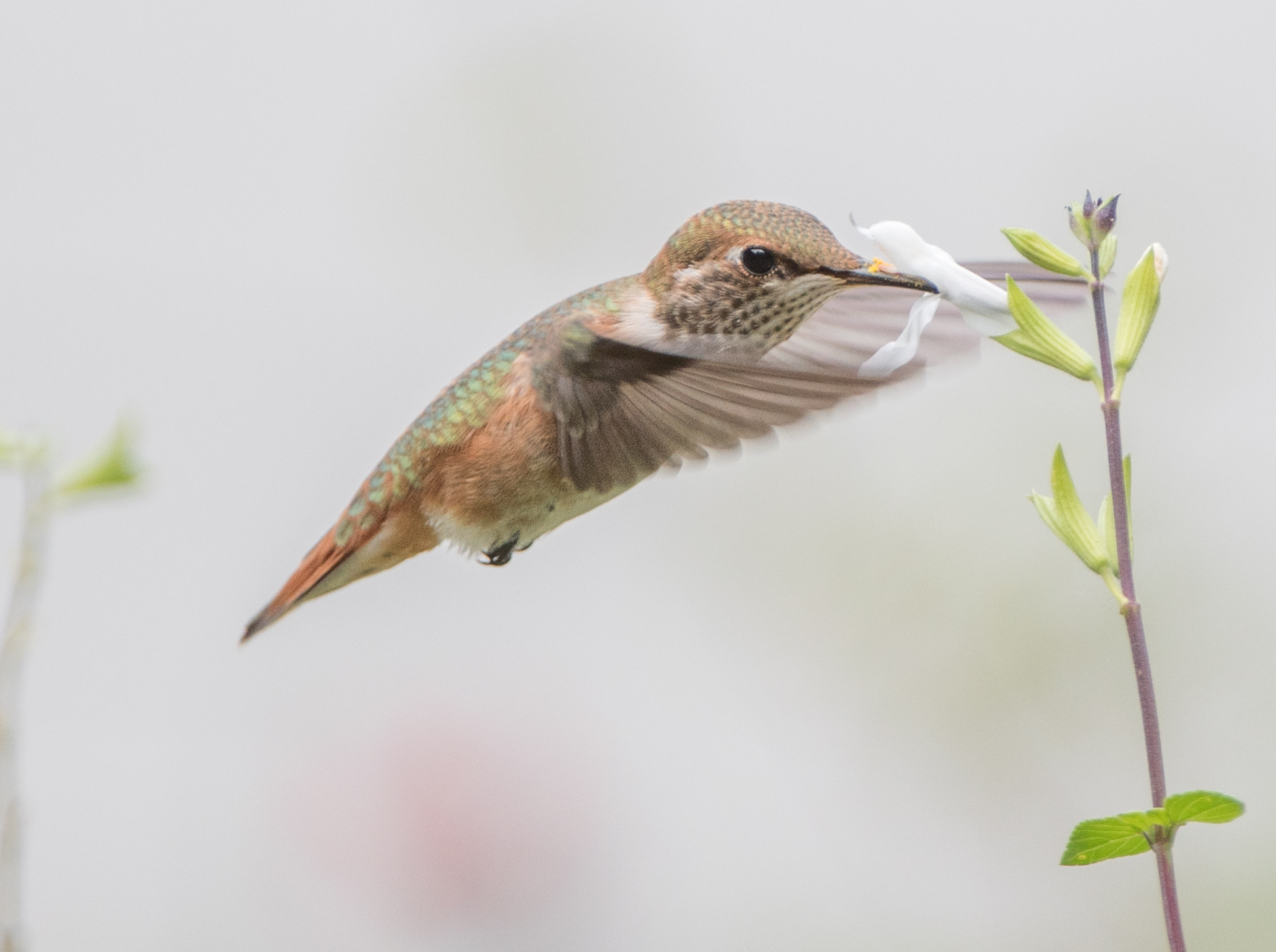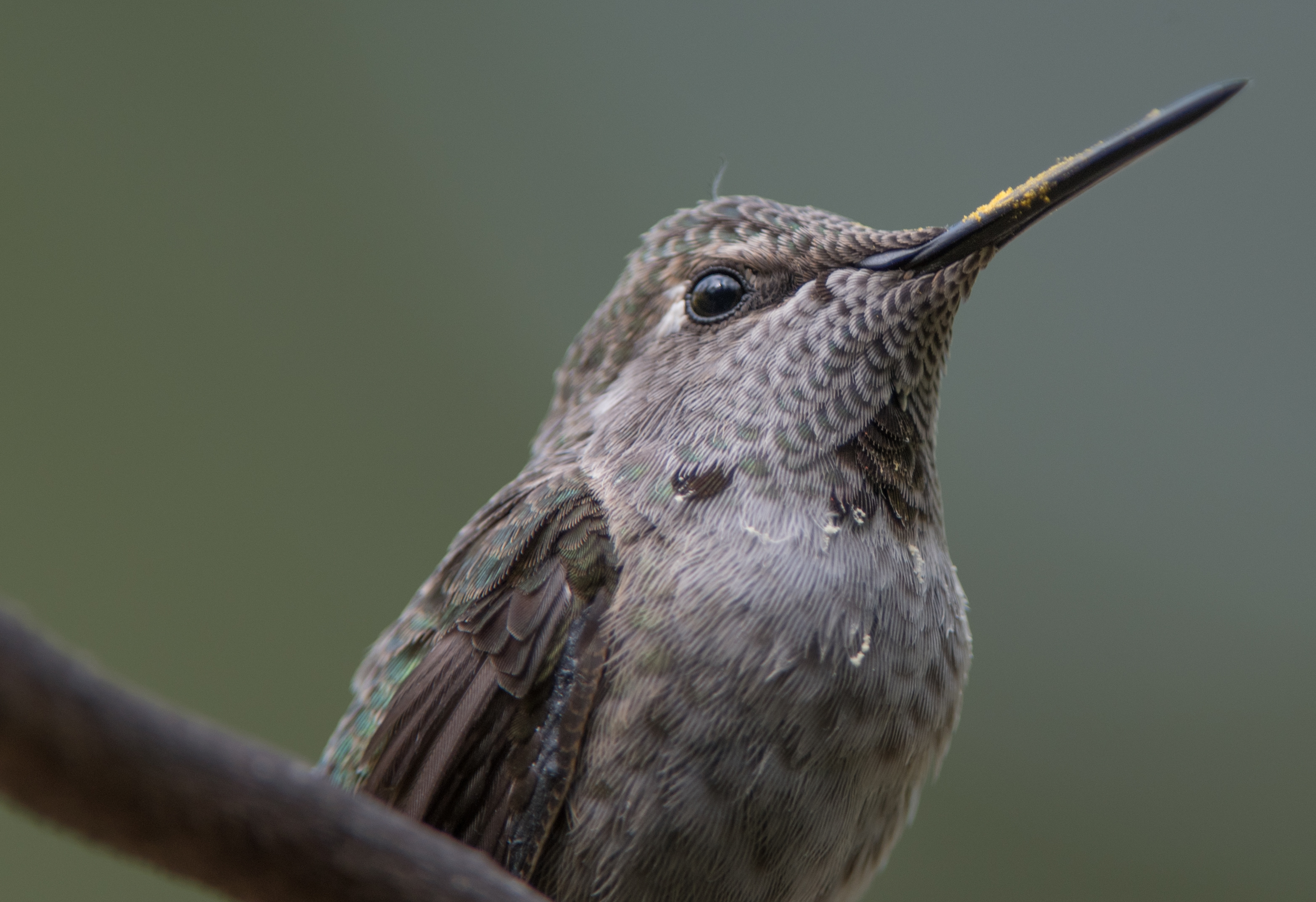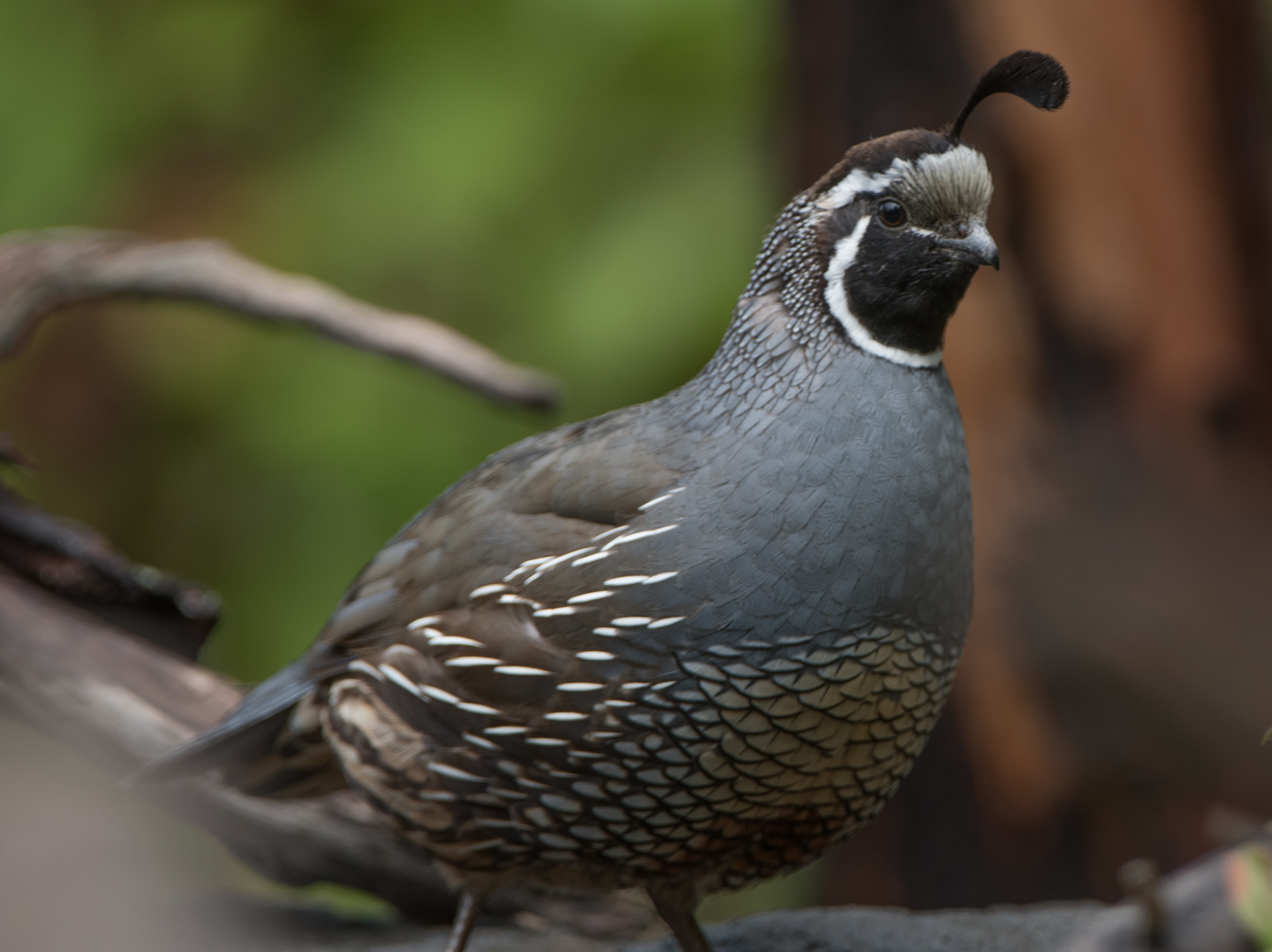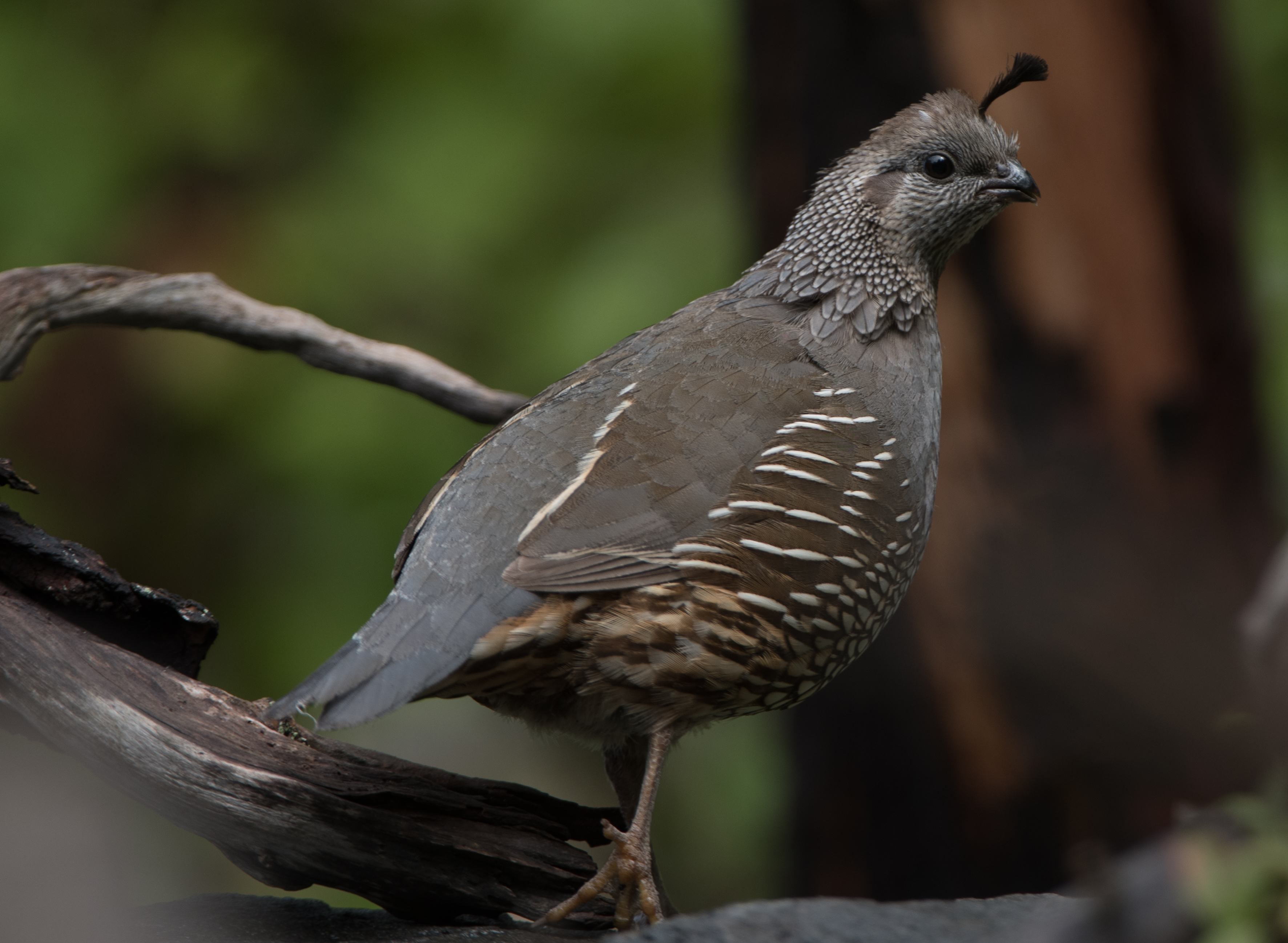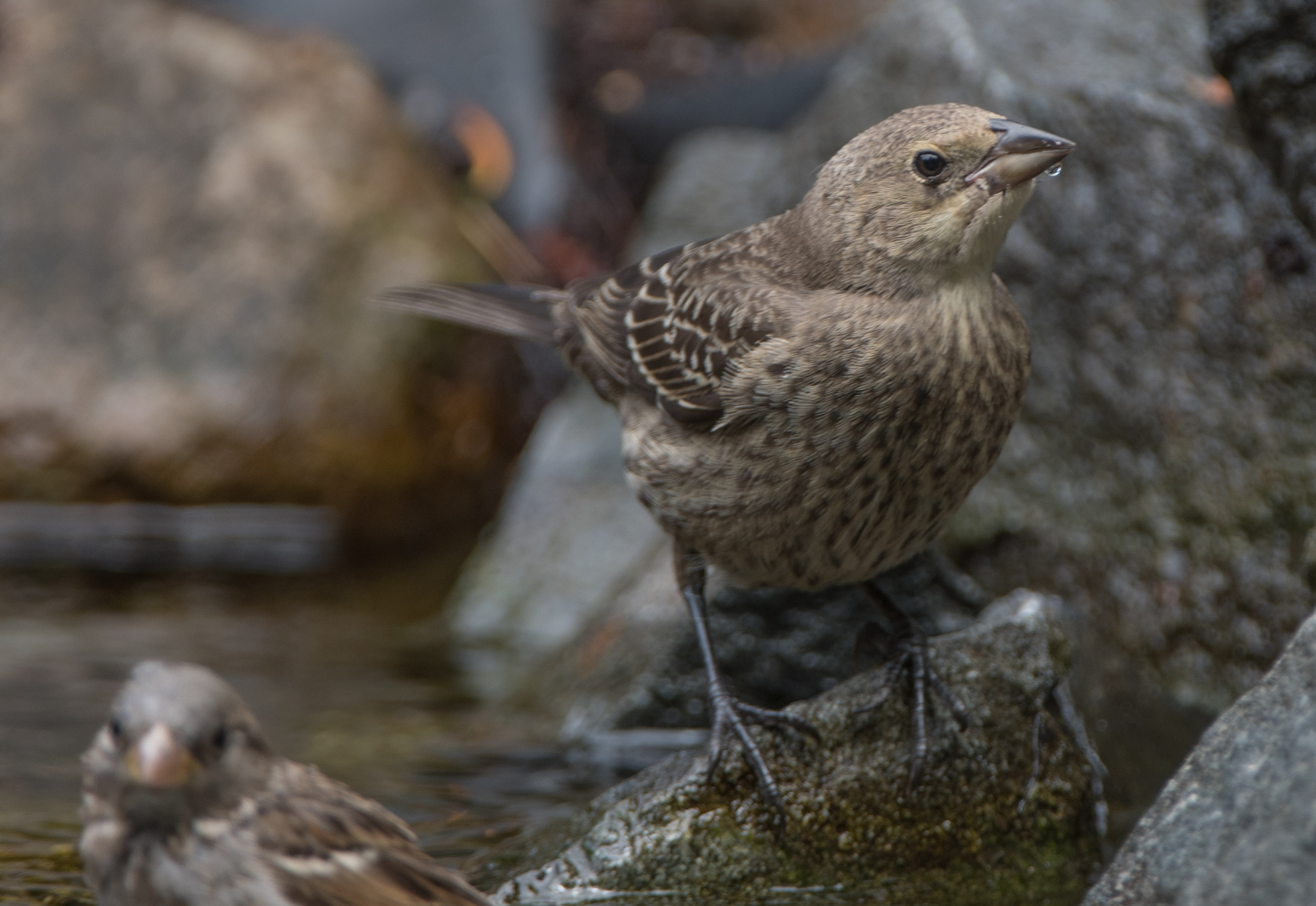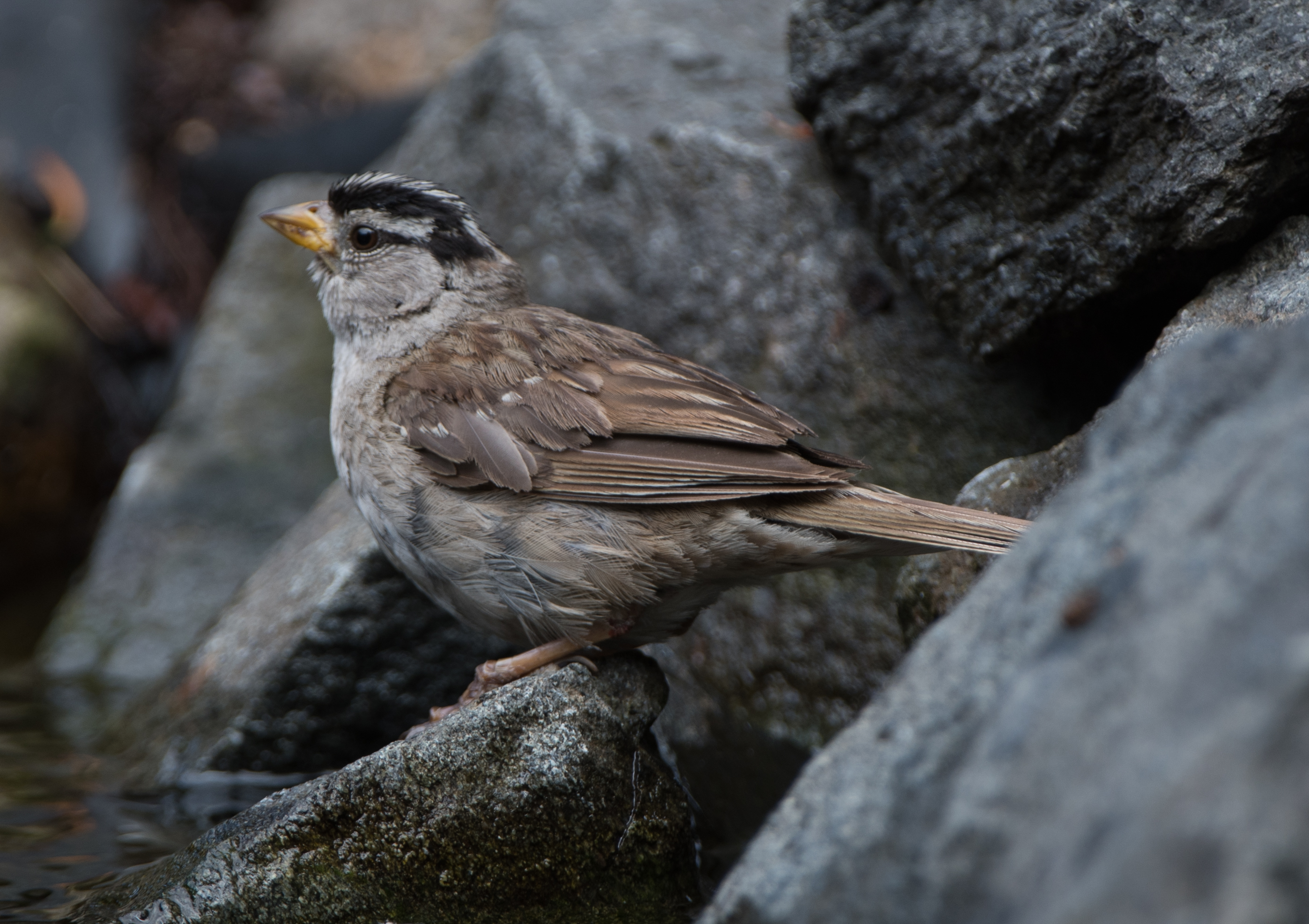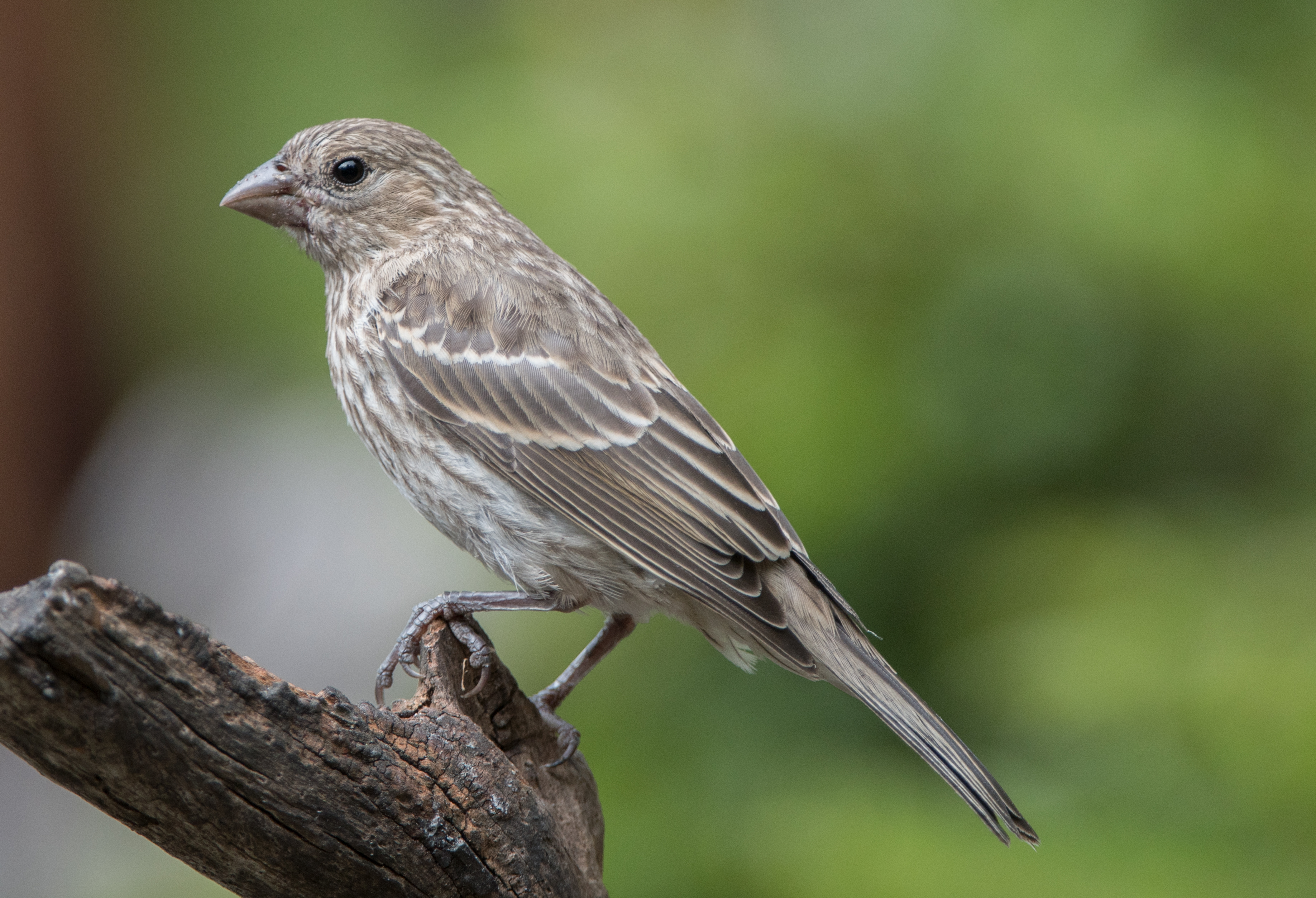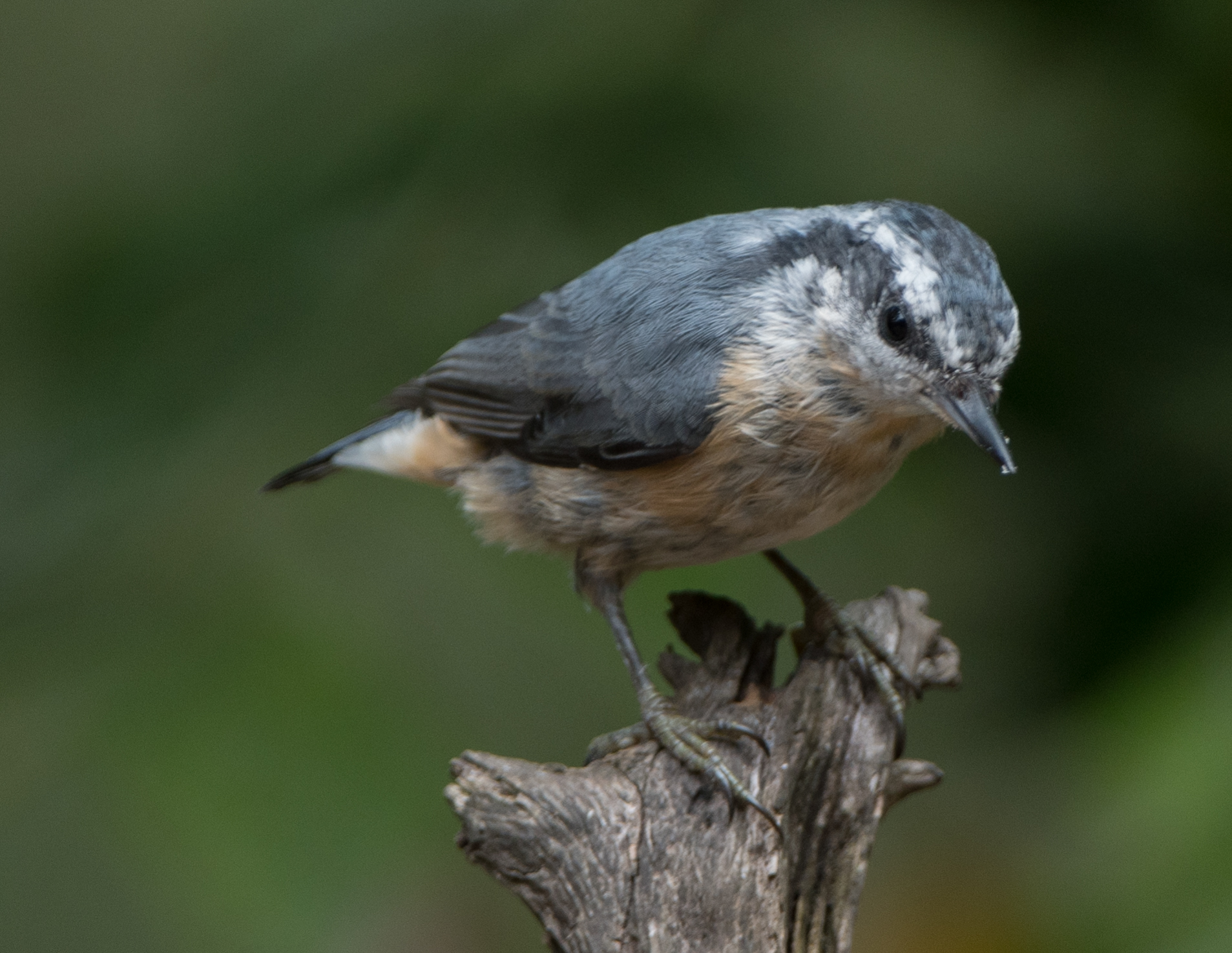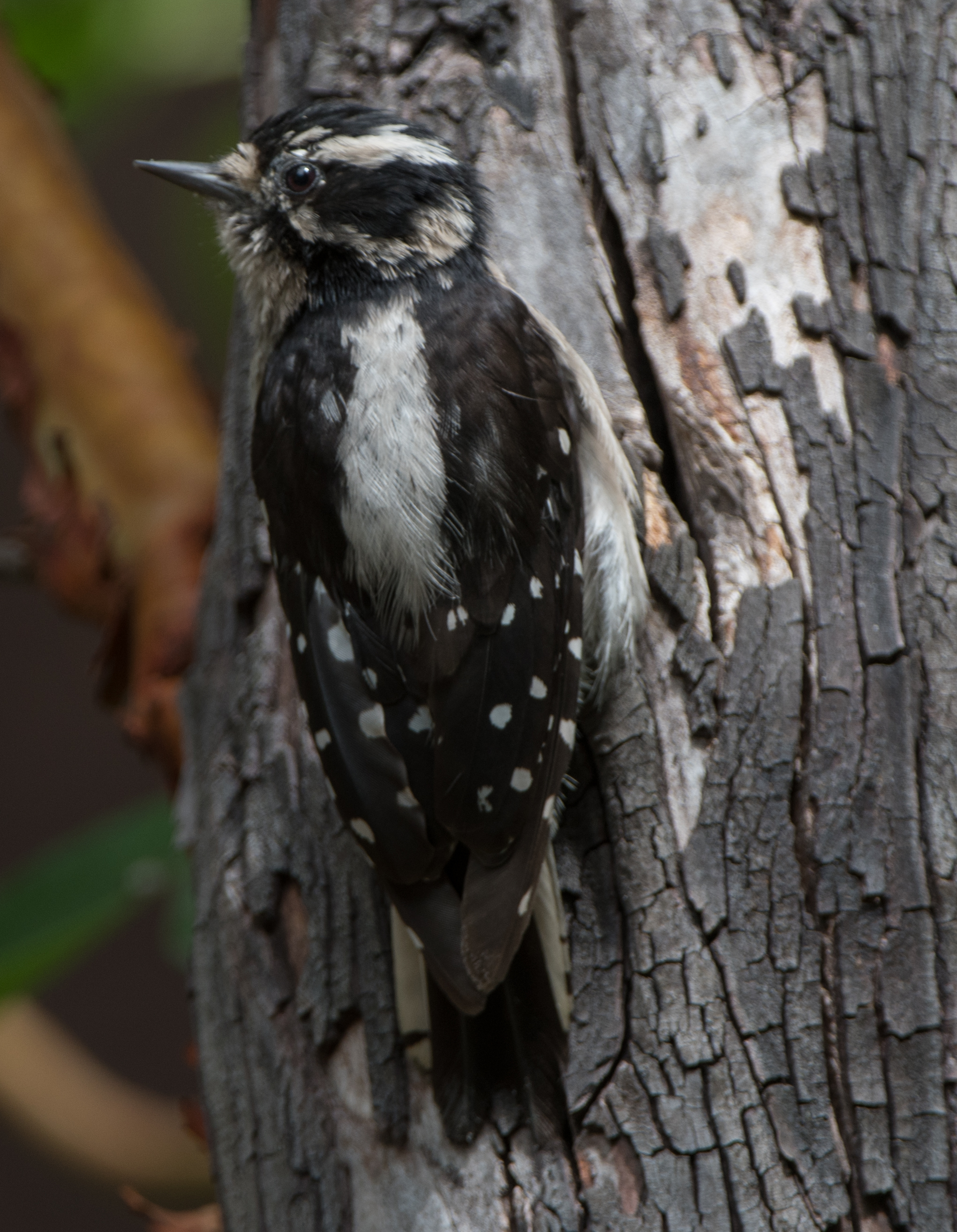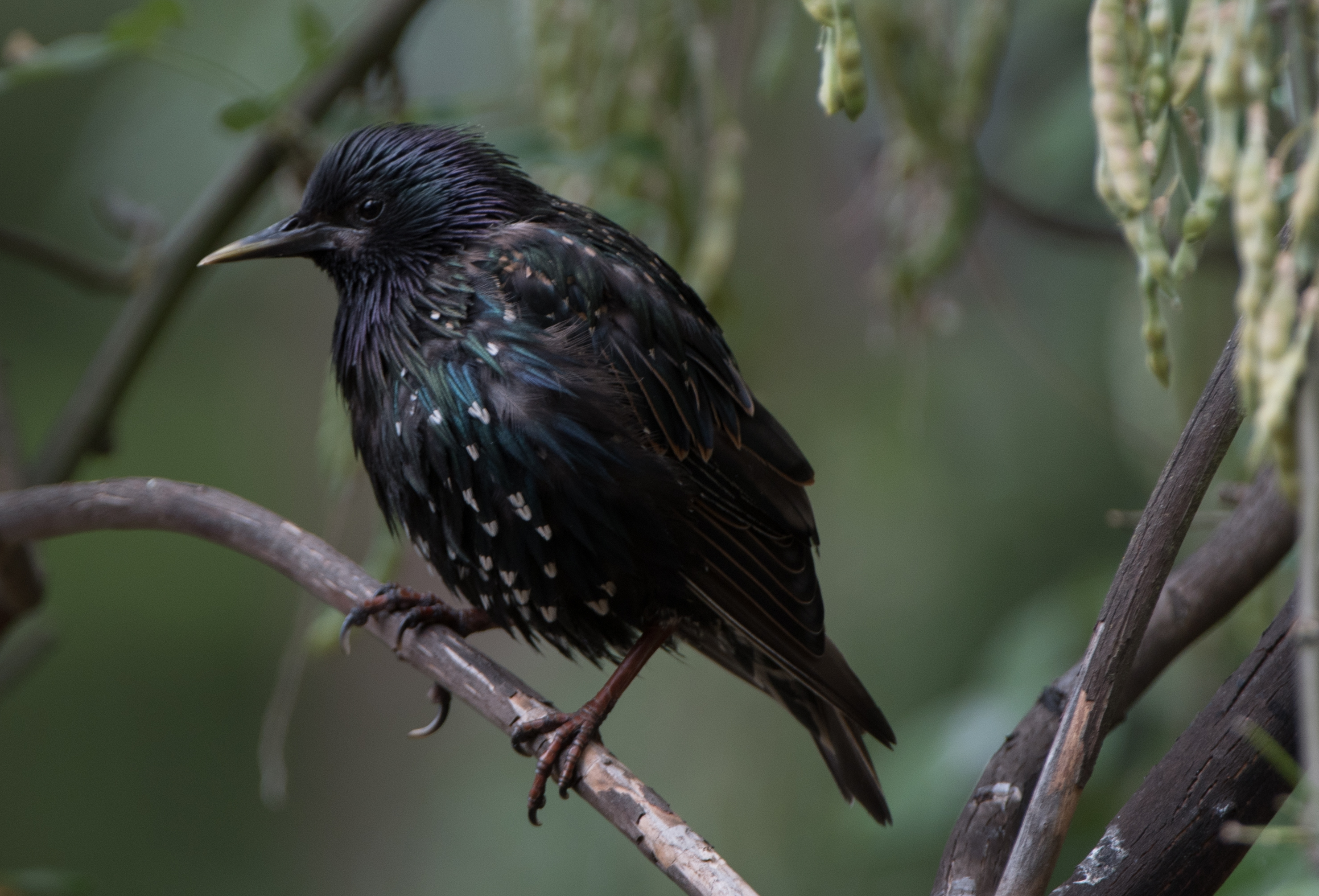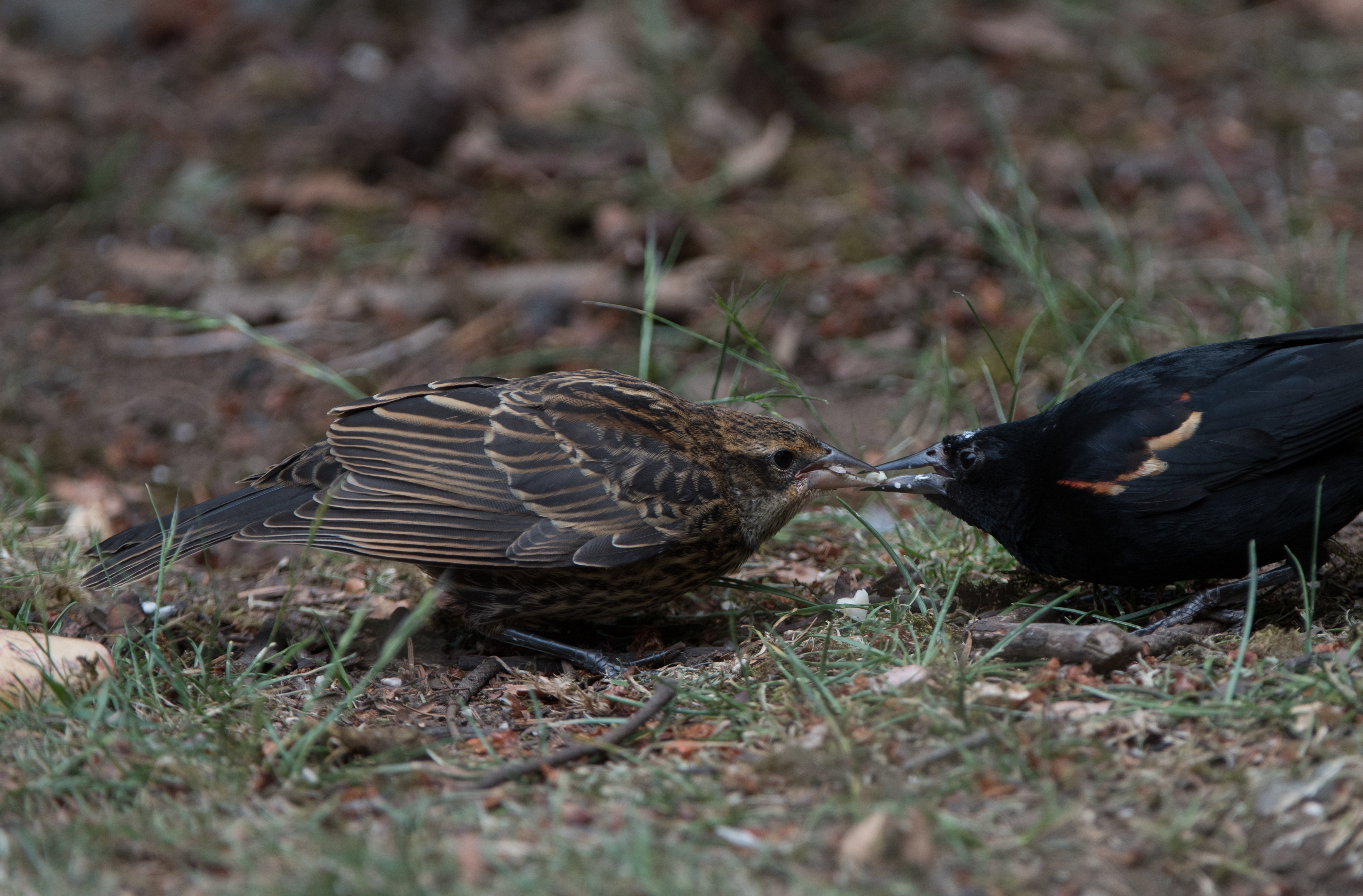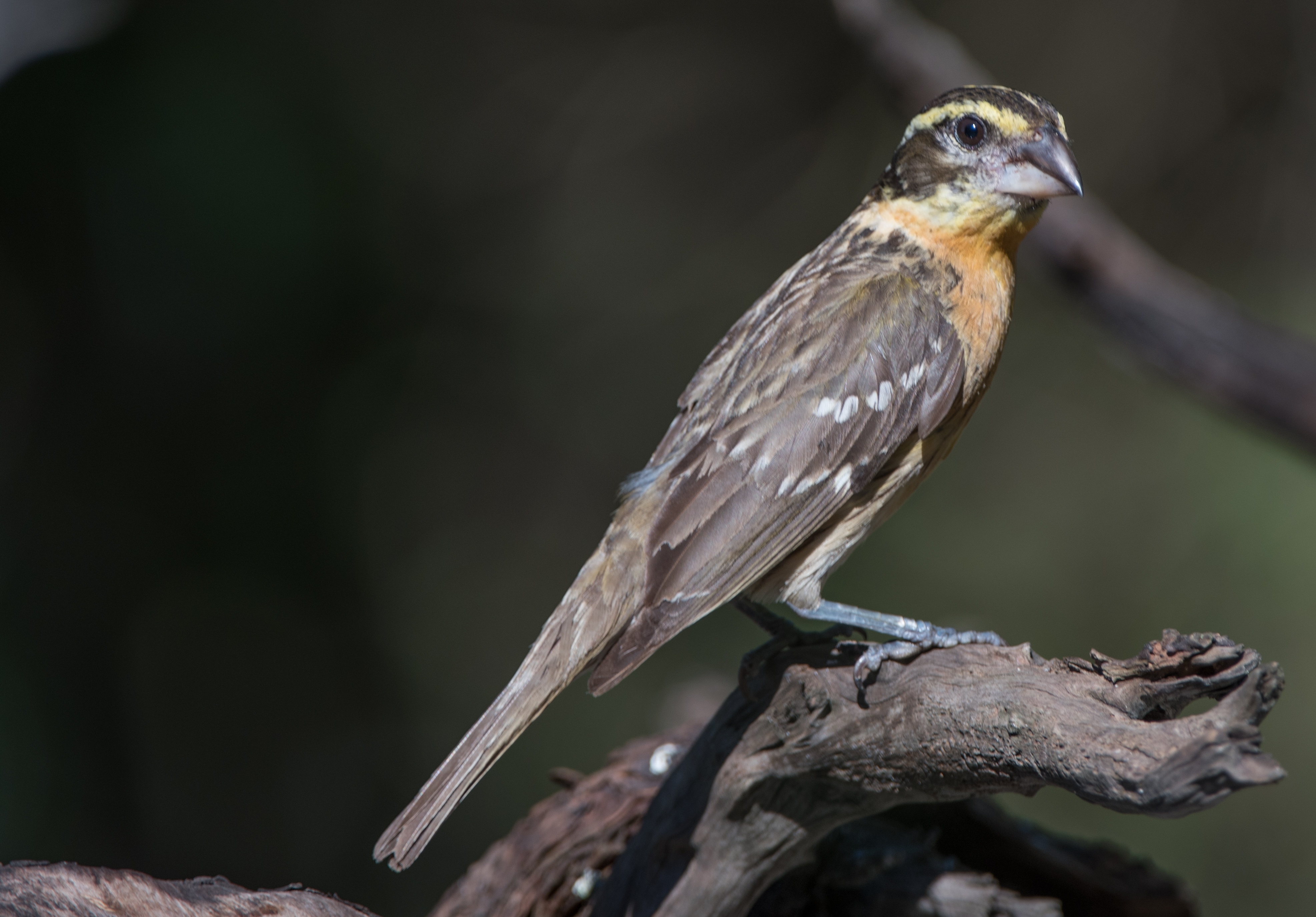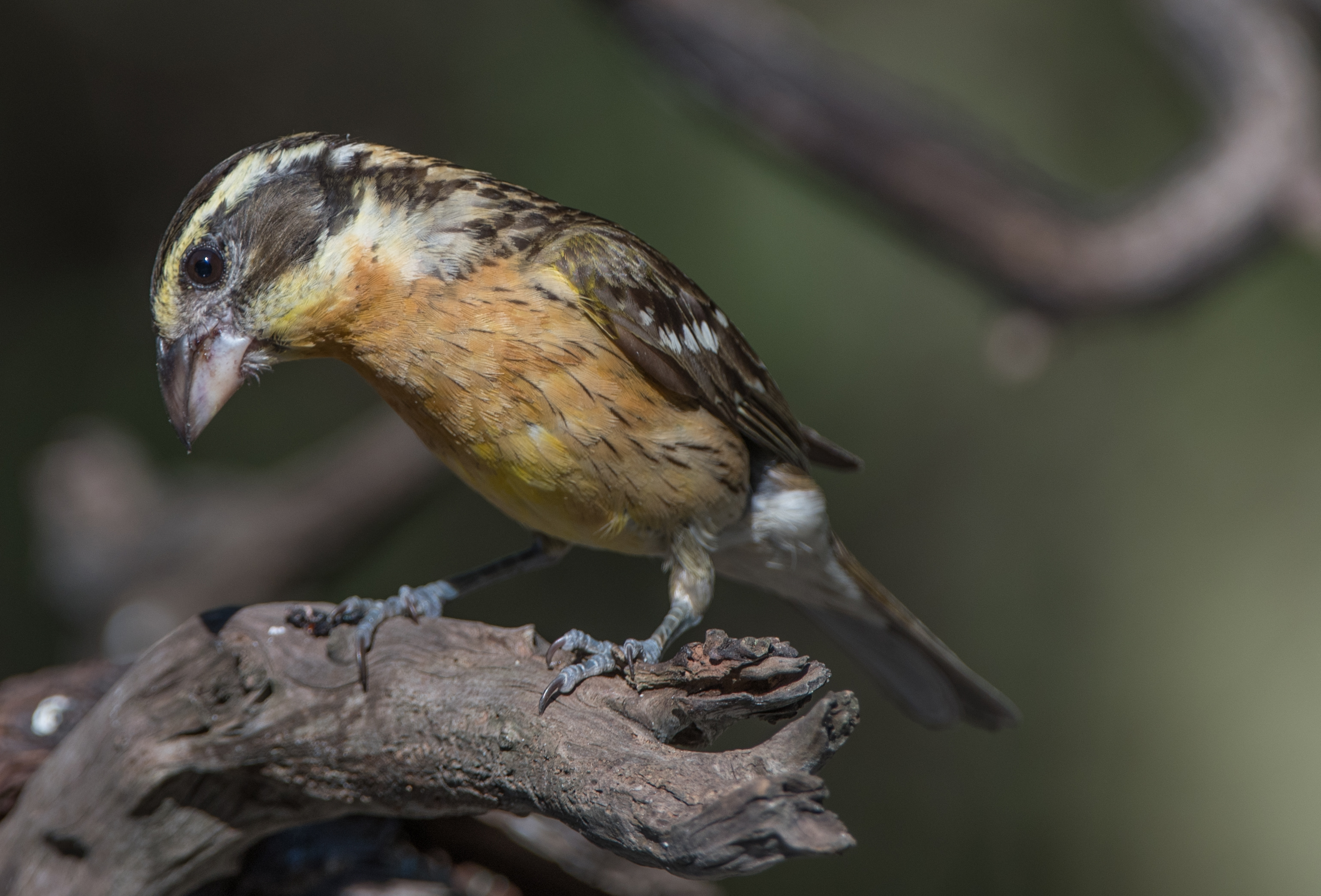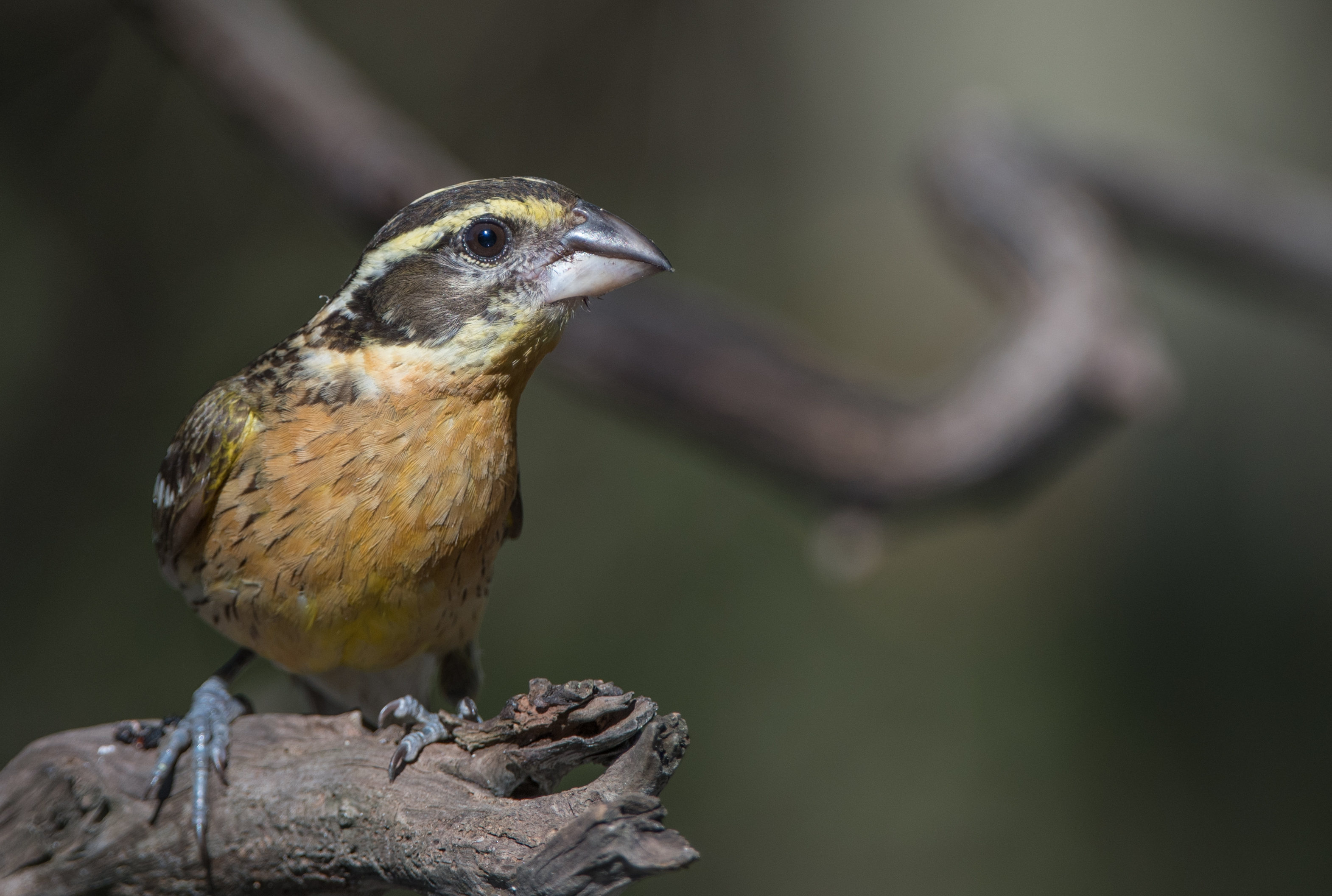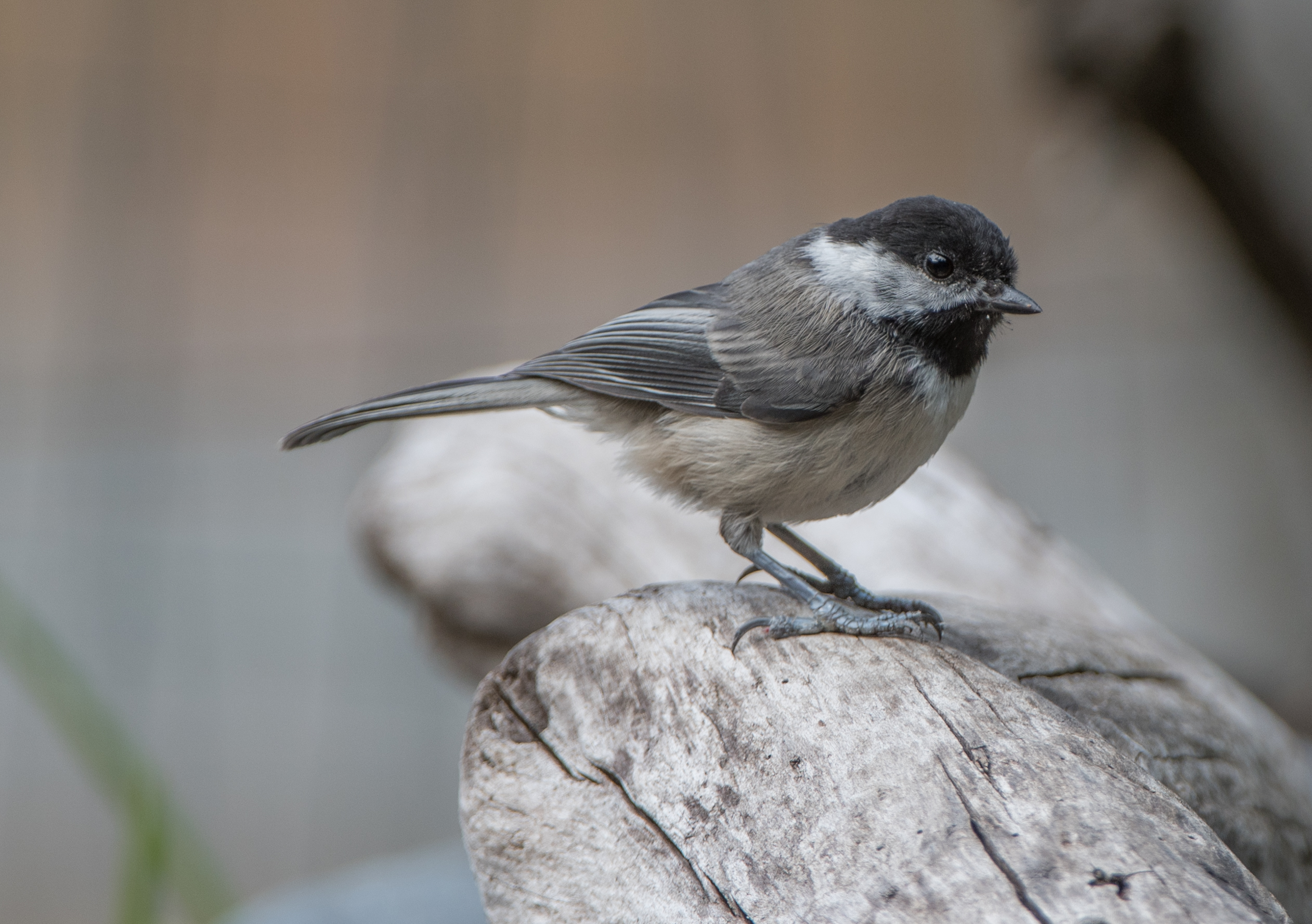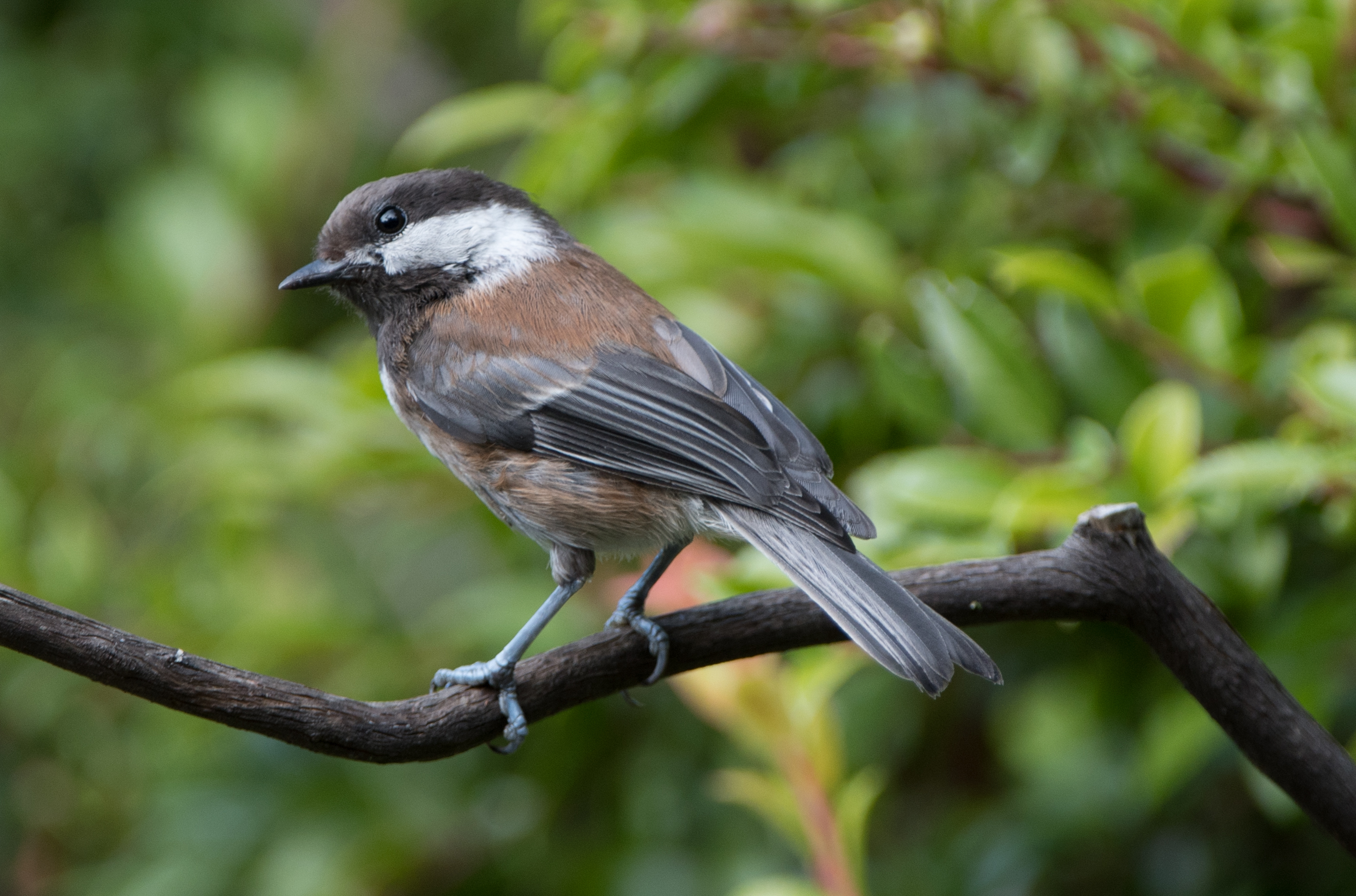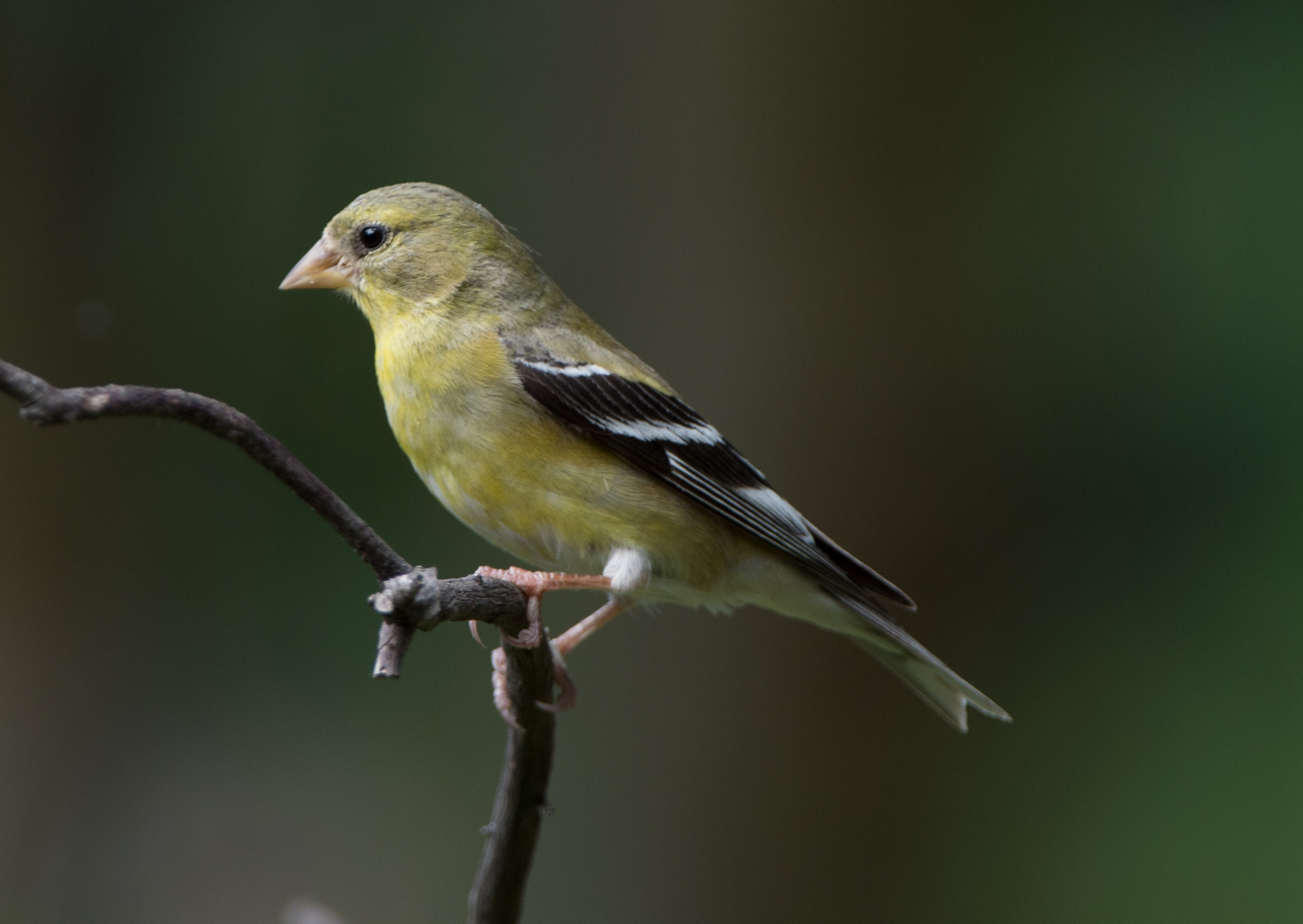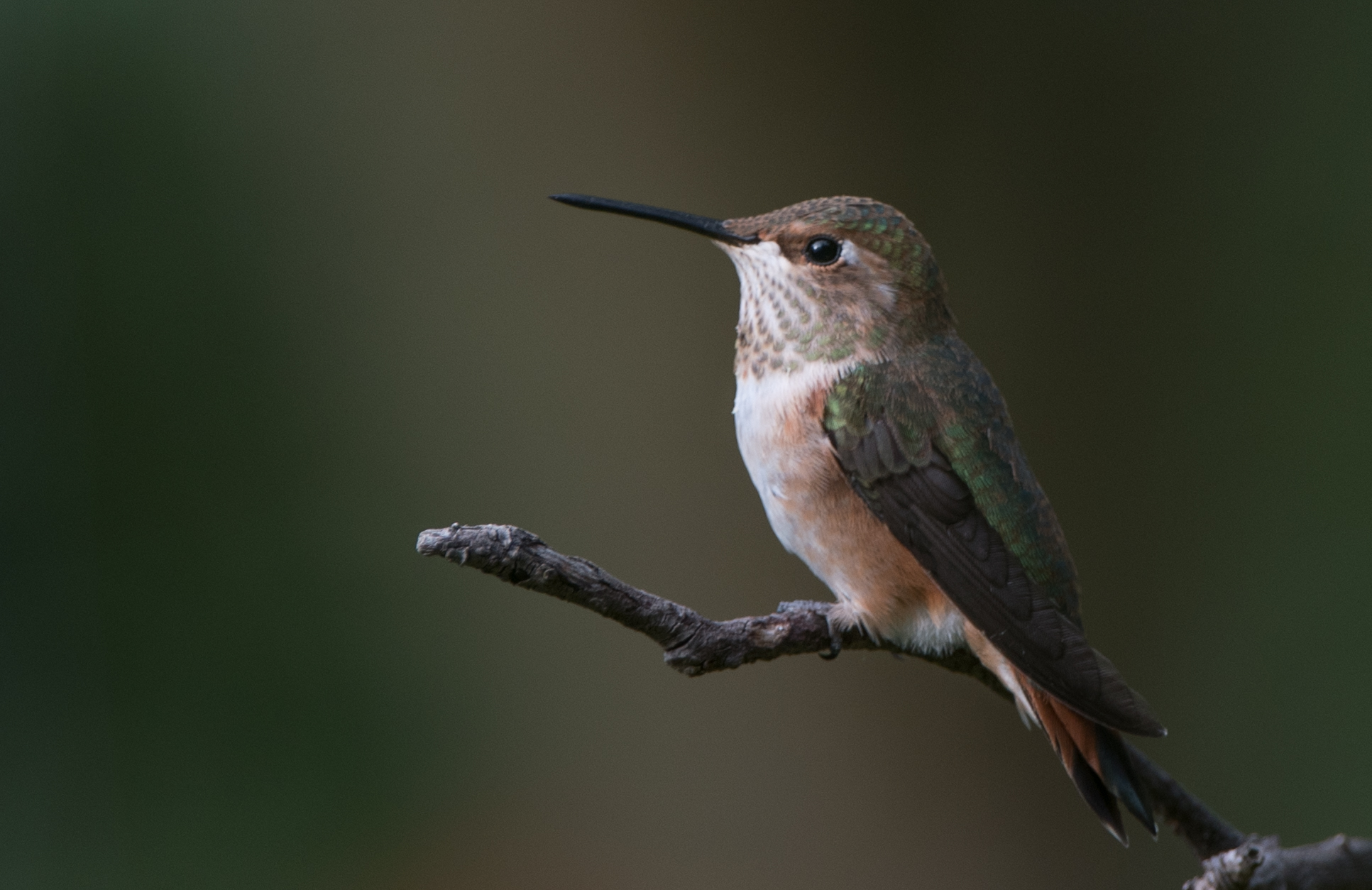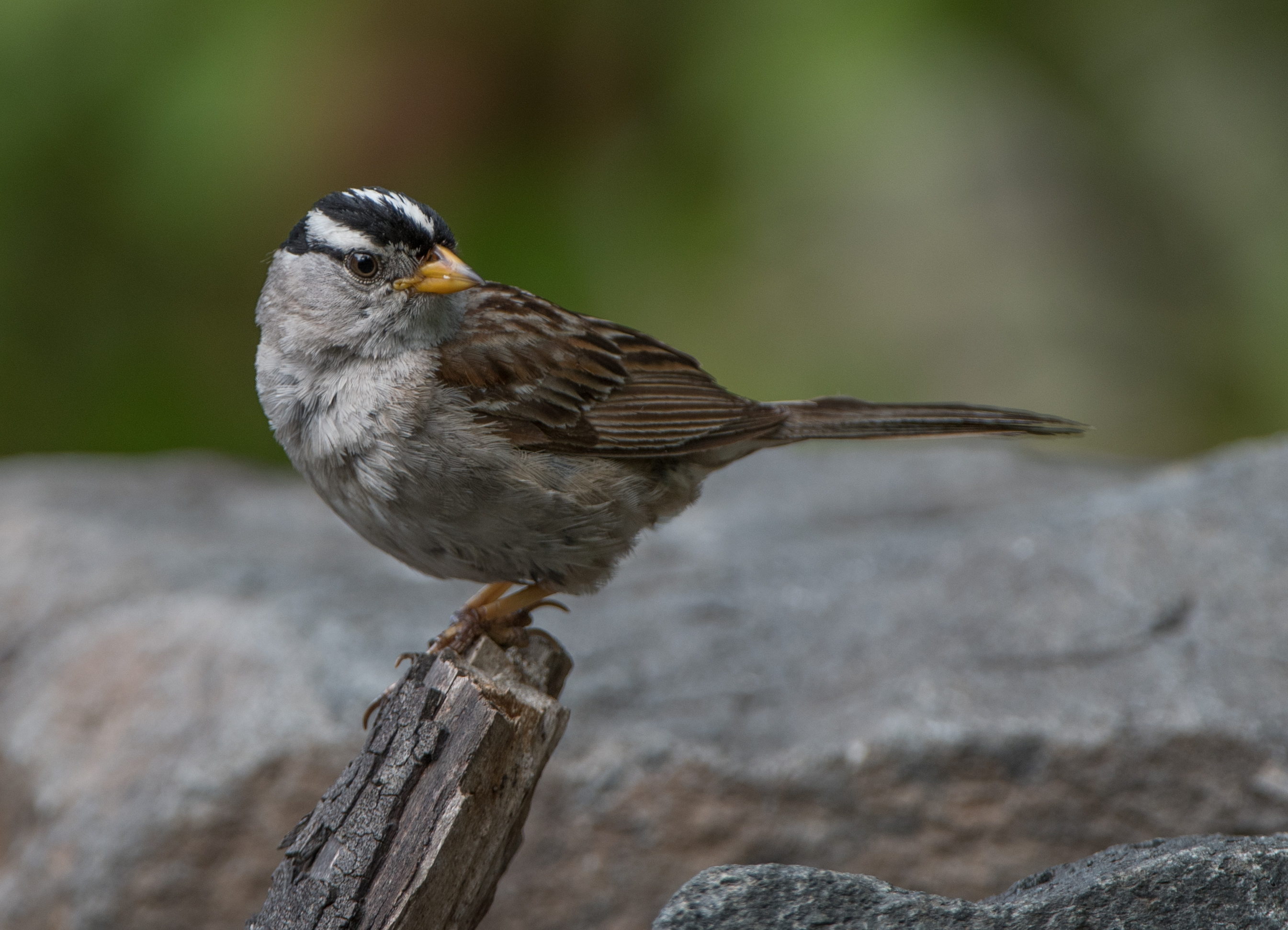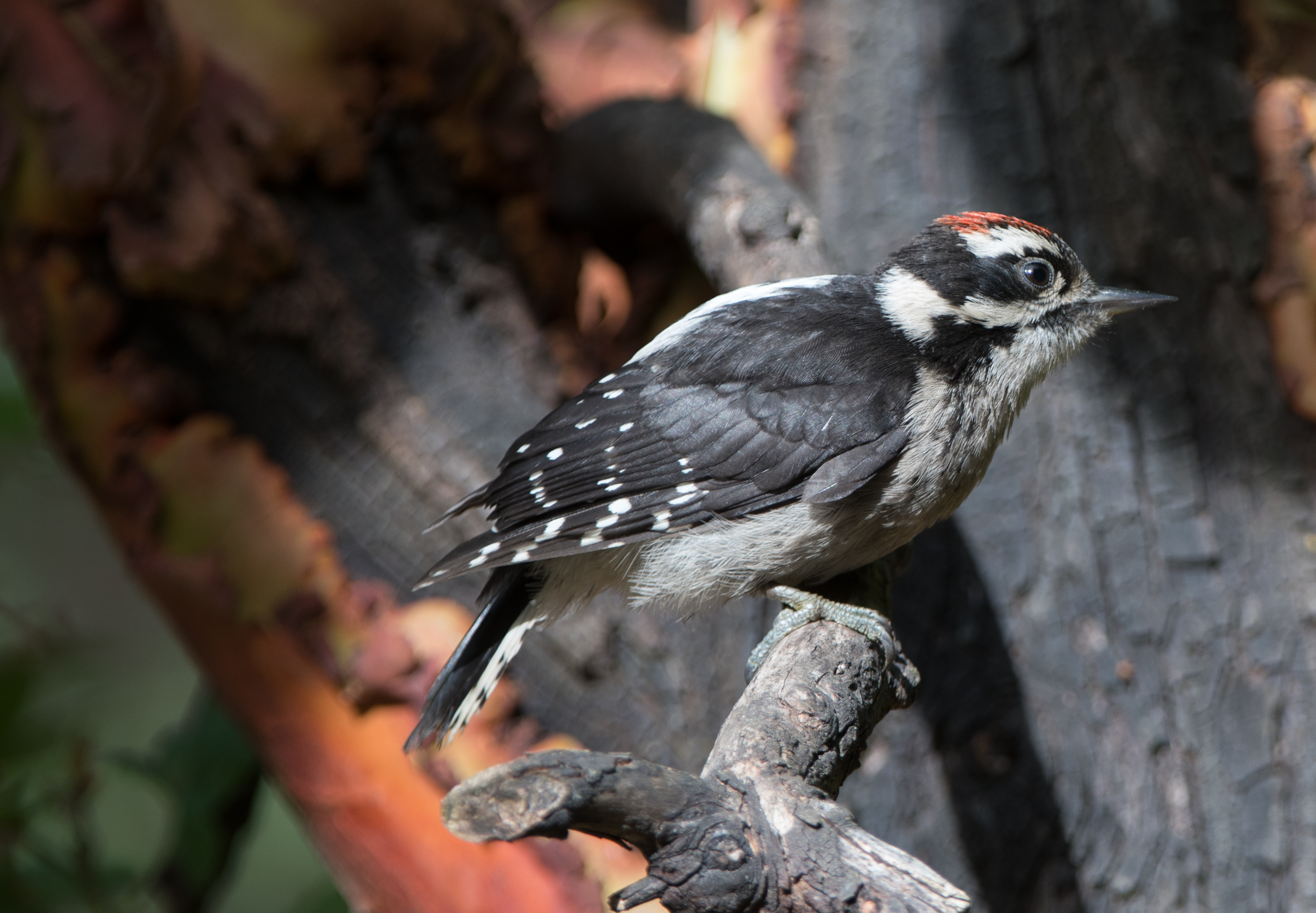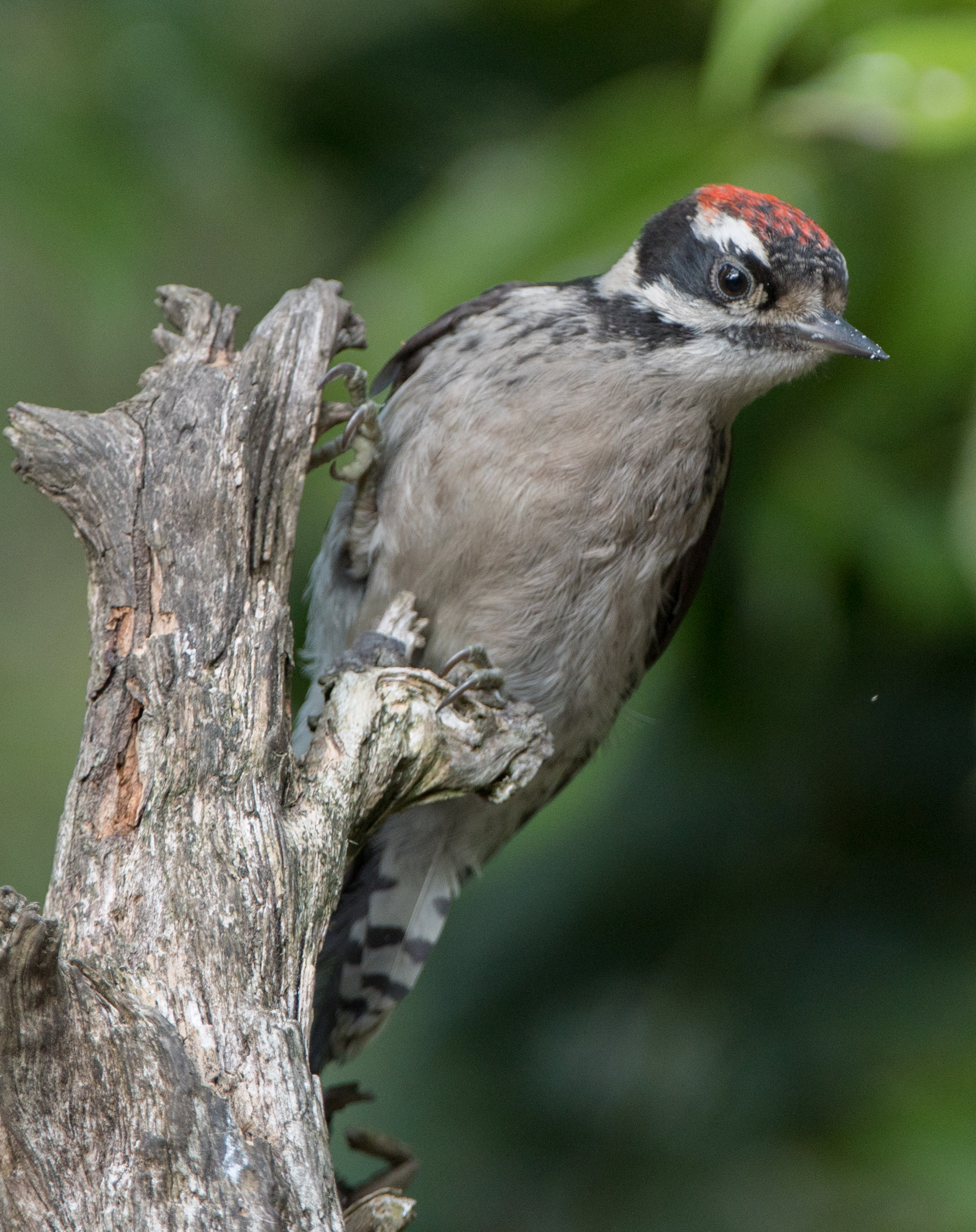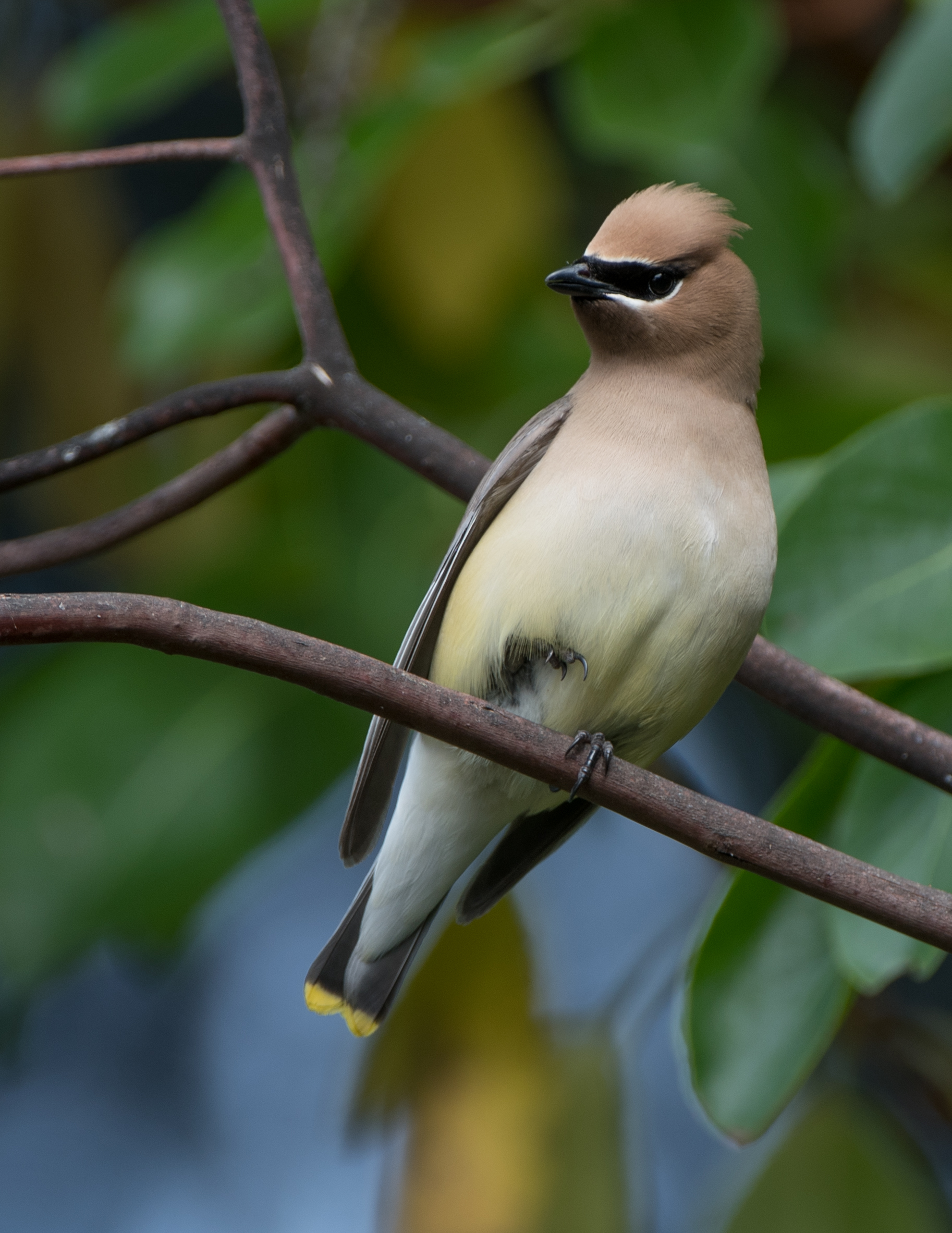My documentation actually begins with Wednesday, July 25. As I mentioned in a prior post regarding that day I saw a pair of White-crowned sparrows gathering food almost the entire day and flying around the corner of the house with it.
That afternoon, when watering some plants in the northwest part of the ‘yard’, I noticed some movement in an Oregon grape bush nearby. Further investigation revealed a very young bird hiding in the bush and being fed by the sparrows. I retrieved my camera and took several photos. As there was only one chick I became suspicious and sent the photo to a more knowledgable friend for confirmation of my suspicions. The friend confirmed that this chick, being raised by a pair of White-crowned sparrows, was in fact a Brown-headed cowbird.
It was a cute chick but as I thought about it overnight I reasoned that this chick, as a breeding adult, could wreak destruction on a large number of songbird nests over the next few breeding seasons. The female can lay over 30 eggs in a season, and the young cowbird will displace the other birds from the nest, potentially wiping out the entire breeding season for each of those 30 breeding pairs. I made the decision to do away with the chick, but by the next day it had moved and I couldn’t find it.
On a more pleasant note, I had more interesting photographic sessions with the California quail on July 26. First, one of the coveys of larger quail entered the yard and after wandering around for a frustratingly long period of time, finally found the seed I had spread to coax them into a more favorable photographic location. I was finally able to obtain some good photos of the larger juvenile quail, which are now approaching the size of the adults.
While photographing the quail my attention was temporarily diverted from the quail by the chance to get some good photos of a juvenile Northern flicker which flew to the watercourse. There are times, as a wildlife photographer that you have to make difficult choices, and this was one of them.
And while all of this was taking place, ‘Stubs’, a new visitor to the yard, made an appearance. Unless he lost his tail last night, that makes three chipmunks that visit the yard from time to time. Welcome to the habitat!
But back to the yard… and the California quail. Later in the afternoon I was idly gazing over the yard when I noticed some movement in the same place the larger quail had visited. It was difficult to see because of its size, but there in the leaves in front of me was one of the very small quail… all by itself! No adults, no siblings! I watched it for about five minutes before it disappeared from my view. I’ve been watching quail for many years, and this is the first time I’ve seen any juvenile quail alone. I hope it survives… a neighbor has warned be that there is an accipiter in the neighborhood.


